- Our Mission

- DIGITAL HERITAGE
- DIGITAL ART

Digital offering at the Smithsonian National Museum of Natural History of Washington
Posted on: 12 October 2020
Text by Caterina Sbrana.
The pandemic from Sars Covid-19 has accustomed us to receive messages of cultural events, exhibitions, concerts, shows that are cancelled. Museums and art galleries have also closed public visits.
However, digital technology is trying to bridge physical distances by allowing people to enjoy culture even staying at home.
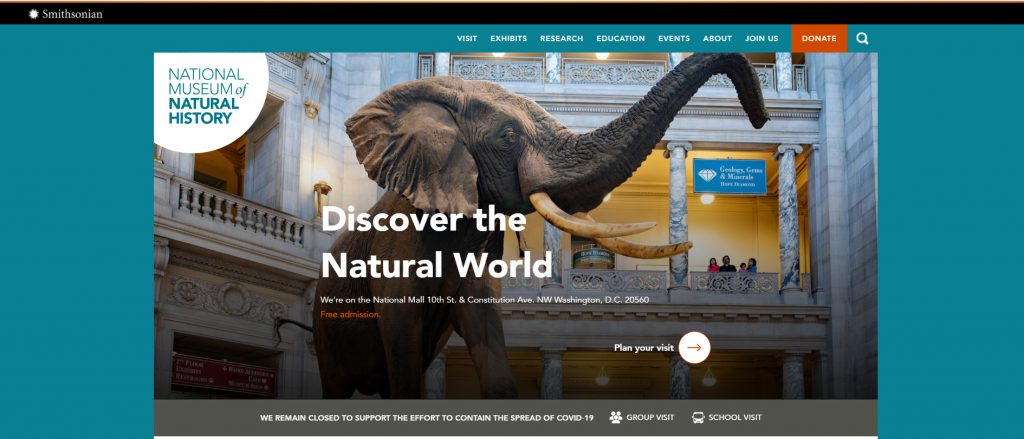
From now on it begins the virtual tour of the Natural History Museum; Image from: https://naturalhistory.si.edu
There are many museums that have begun to offer digital tours and virtual exhibitions however others already had these tours before Covid-19. In this article I would like to present the Smithsonian National Museum of Natural History digital offering that ranges from virtual tours of exhibits to distance learning resources.
First I would tell you why I chose the virtual tour proposed by the Smithsonian National Museum.
The navigation in the site is simple and fast; the graphics of the site, is excellent, very clear and understandable even by people not familiar with the web; thanks to the toolbar that allows you to move your mouse left and right you can easily continue in the path choosing which section of the museum/site to visit.
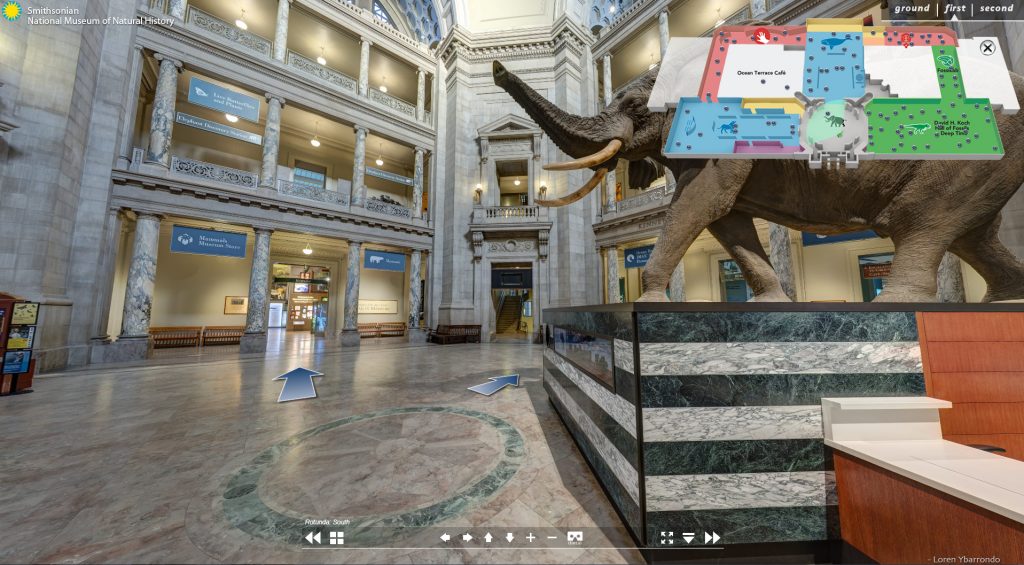
This photo shows us the beginning of the tour and the rooms we can visit; Image from: https://naturalhistory2.si.edu/vt3/NMNH/z_tour-022.html
It’s great for teachers, because it contains several sections with images that allow you to know not only the different habitats and animals that inhabit them, but also the history of man and its evolution.
The quality of the photographs is excellent; the layout of the exhibition is extremely effective.
The virtual visit to the Smithsonian National Museum of Natural History allows visitors to make independent guided tours, room by room, from their desktop or mobile device.
The virtual tour is also recorded in several videos and a narrator explains with simple words the section.
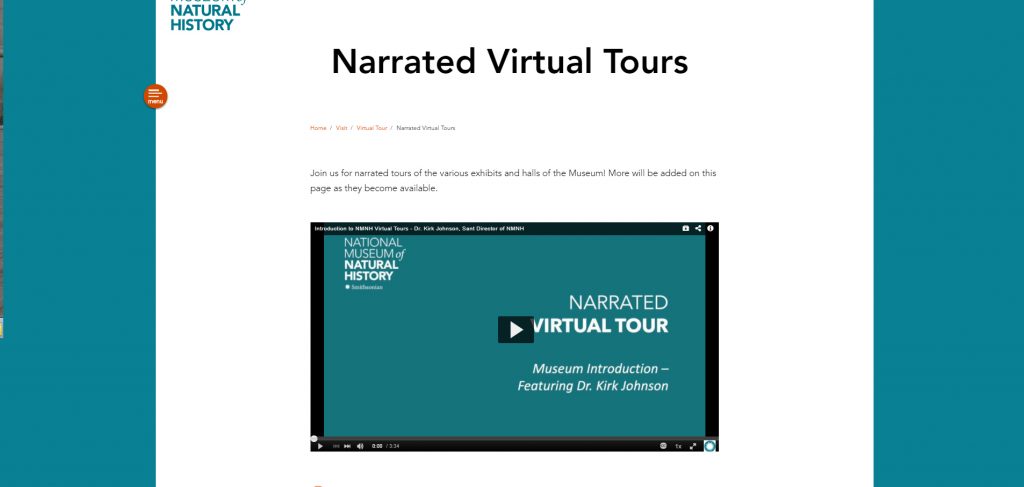
The page to enter in one of the narrated virtual tours; Image from: https://naturalhistory.si.edu/visit/virtual-tour/narrated-virtual-tours
If we decide to enter the section of the museum related to Africa we can admire different animals and hunting scenes and discover the natural environments. Then, we can decide whether to continue the visit to the territories of the southern hemisphere or North America.
I suggest you to watch the video with the narrated tour of the Hall of Human Origins illustrated by the researcher Dr. Diana Pobiner. I found it very interesting because it answers some essential questions about human life “who are we?”, “how did we become human?”.
Kirk Johnson, Sant Director of the Smithsonian National Museum of Natural History, reports that this is the most visited virtual museum in the world, where people can “find detailed information about our exhibits, events, collections, scientific research and educational programs” and specifies that “the museum’s mission is understanding the natural world and our place in it”.
Once again we discover that, thanks to technology and the web, especially in this period when people move less, we can continue to increase our culture using our digital devices.
https://naturalhistory.si.edu
https://naturalhistory.si.edu/explore-at-home
https://naturalhistory.si.edu/visit/virtual-tour
https://naturalhistory2.si.edu/vt3/NMNH/z_tour-022.html
View all editorials
View all interviews, view all events, leave a reply cancel reply.
You must be logged in to post a comment.
Related Articles
Join the digital meets culture open newsroom.

Upcoming events

View all the upcoming events

EUreka3D project was accepted for a paper and presentation in the prestigioius annual conference EVA Electronic Imaging and the Visual Arts, organised in Florence by Professor Vito Cappellini, University of Florence. The main topics this year include: – European Commission … Continue reading →

This webinar in two parts brought together professionals from the spectrum of Digital Cultural Heritage practice to share their experiences of using and working with paradata seeking to lay down a common understanding of paradata as a first step towards … Continue reading →
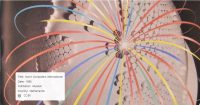
The Time Machine Organisation in collaboration with the Europeana Initiative have developed a survey seeking to better understand the existing landscape of digital European data infrastructures facilitating the storage of 3D cultural heritage datasets/digital objects. The questions address various topics … Continue reading →

- DIGITAL MEETS CULTURE IS MEDIA PARTNER OF:

The Call for presenters at the European Cultural Tourism Network conference 2024 is now open. The 17th ECTN conference with main theme “European Collaboration for Smart and Sustainable Cultural Tourism Destinations” will discuss the latest trends in the field … Continue reading →

The new edition of the Image and Research Conference (18th Antoni Varés Conference) will be held in Girona from November 20th to 23rd, 2024. The event is organized by one of the founding members of PHOTOCONSORTIUM, Ajuntament de Girona, which has … Continue reading →
#participateinculture #societalvalueofculture #unchartedculture 3D AI Amsterdam animation Antonella Fresa archaeology Athens audiovisual augmented reality Berlin big data Brussels call for papers Caterina Sbrana citizen participation Citizen science Civic Epistemologies co-creation conference Conference and events conferences and events conformance check Coventry University creative industry CULTURA cultural heritage cultural participation cultural tourism dance DCH-RP digital art Digital Cultural Heritage Digital Heritage digital humanities digital libraries digital preservation digitisation digitization DPF Manager e-Infrastructures e-learning E-Space EAGLE education EUDAT EUreka3D Euromed Europa Nostra Europeana Europeanaphotography Europeana Space European Commission Eötvös Loránd University file formats Fred Truyen Girona Granada Hackathon Horizon 2020 ICT INCULTUM incultum project innovation IPR KU Leuven Linked Heritage London MediaConch MEMOLab museums open source software Paris participatory approaches participatory approaches to cultural heritage PDF/A performing arts Photoconsortium photography Pisa PREFORMA preservation Promoter REACH project RICHES Sarah Whatley standards sustainable tourism technology UGR University of Granada UNCHARTED community UNCHARTED event UNCHARTED Project UNESCO VeraPDF Vienna WEAVE workshop
Privacy Overview
Your Smithsonian, Anywhere
Your smithsonian is here for you, no matter where you are millions of digital educational resources from smithsonian museums, research centers, libraries, and archives are at your fingertips., distance learning.
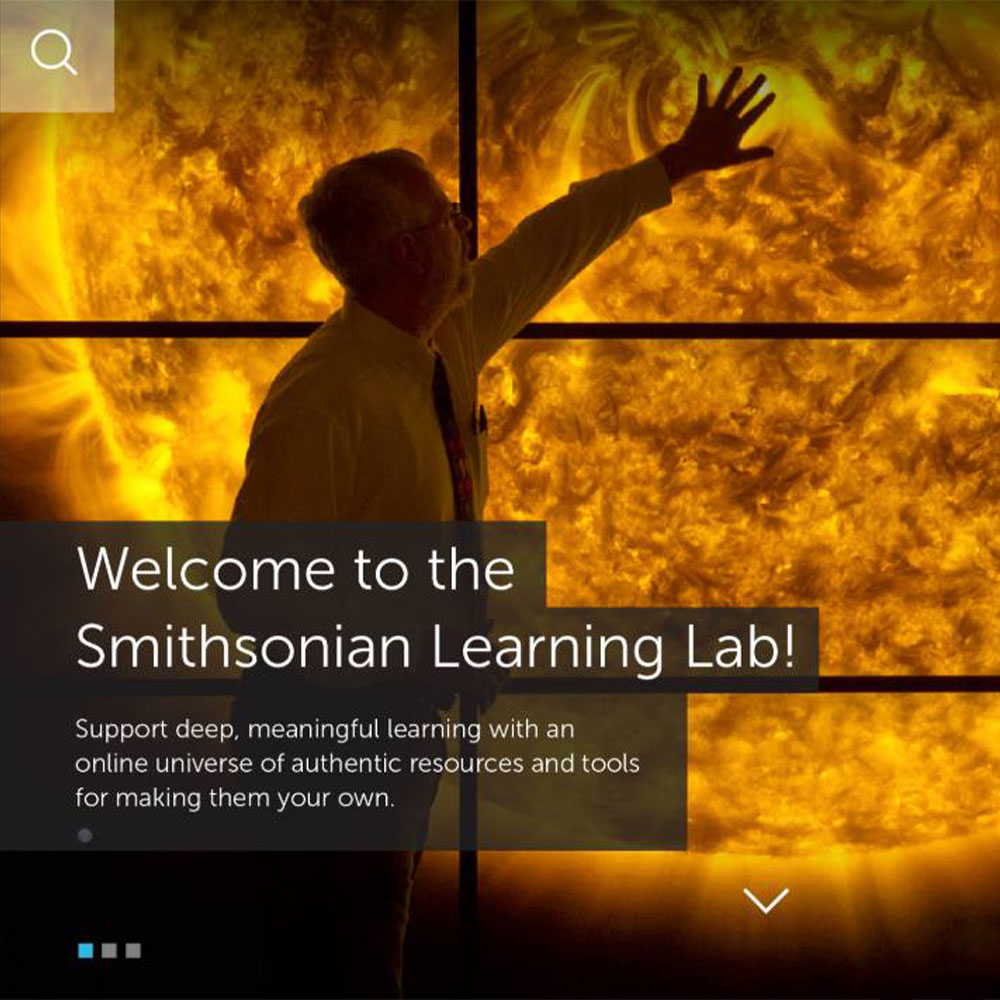
The Learning Lab is a dynamic way to access the Smithsonian’s vast collections. It also includes pre-packaged collections that include lessons, activities, and recommended resources made by Smithsonian museum educators as well as thousands of classroom teachers across the country. Visit the Lab »

Follow That Bird! is a science and technology unit on tracking birds from the Smithsonian's National Zoo and Conservation Biology Institute. The unit includes lesson plans for teachers, as well as bird profiles, tracking device readings, live bird-tracking data, and bird-tracking maps for students. Look! Up in the sky! »
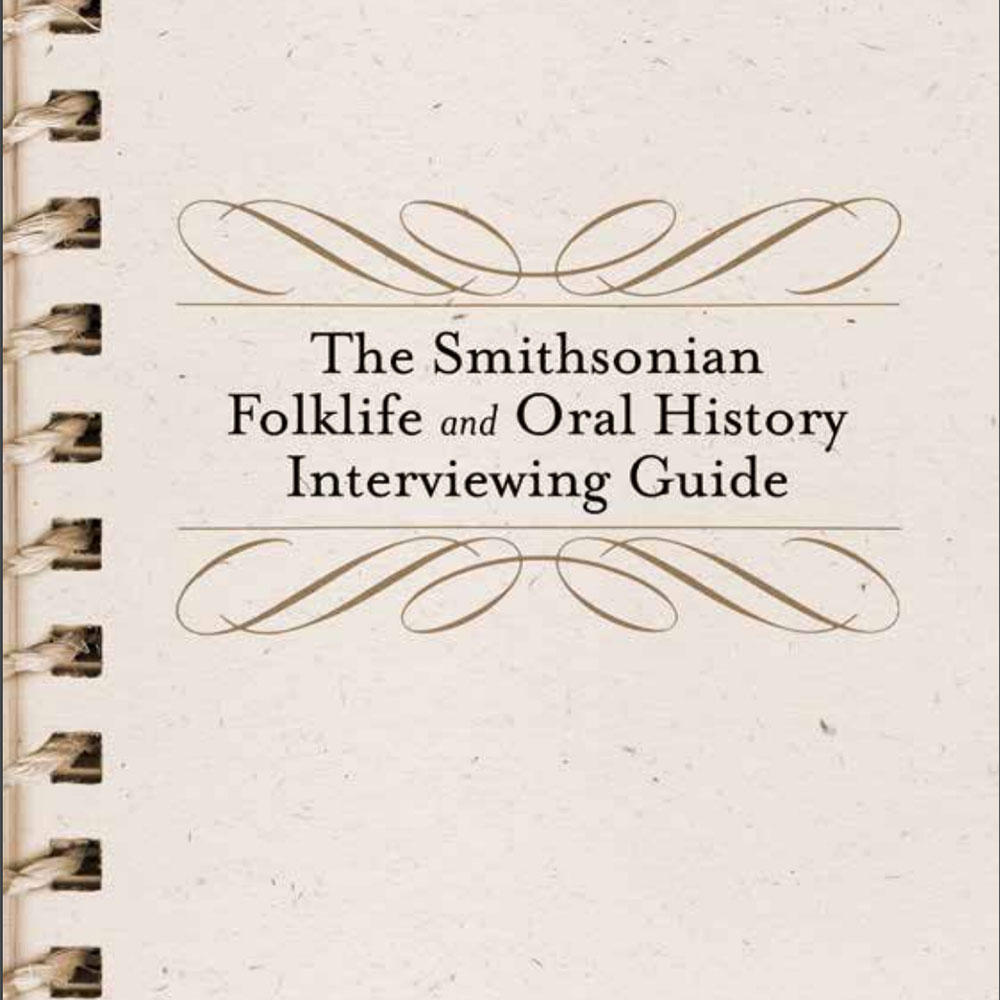
Family and community members are key sources of history, culture, and tradition. This booklet presents some guidelines Smithsonian folklorists have developed over the years for collecting folklife and oral history. It features a general guide to conducting an interview, as well as a sample list of questions that may be adapted to your own needs and circumstances. Find out more »
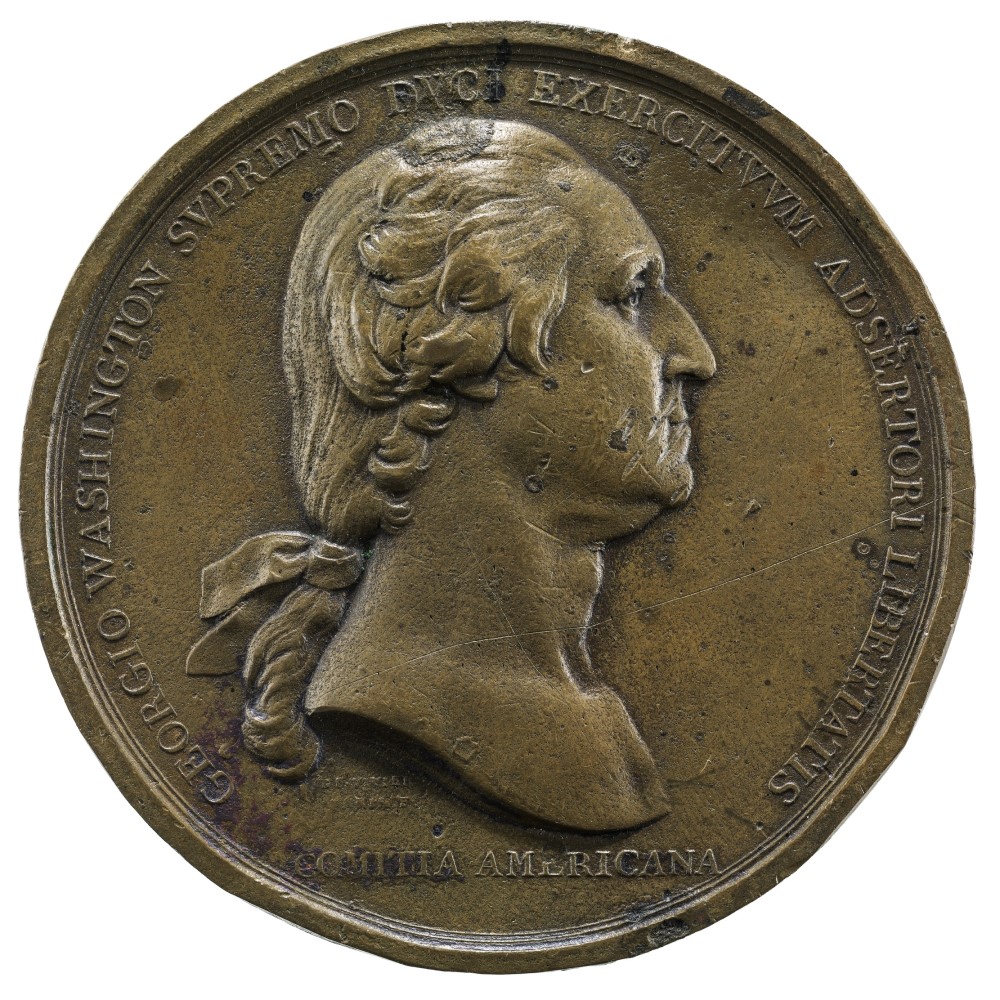
Smithsonian's History Explorer offers hundreds of free, innovative online resources for teaching and learning American history. The site is designed for use by K-12 teachers and students, afterschool program providers, families, and individuals interested in lifelong learning. Start exploring »
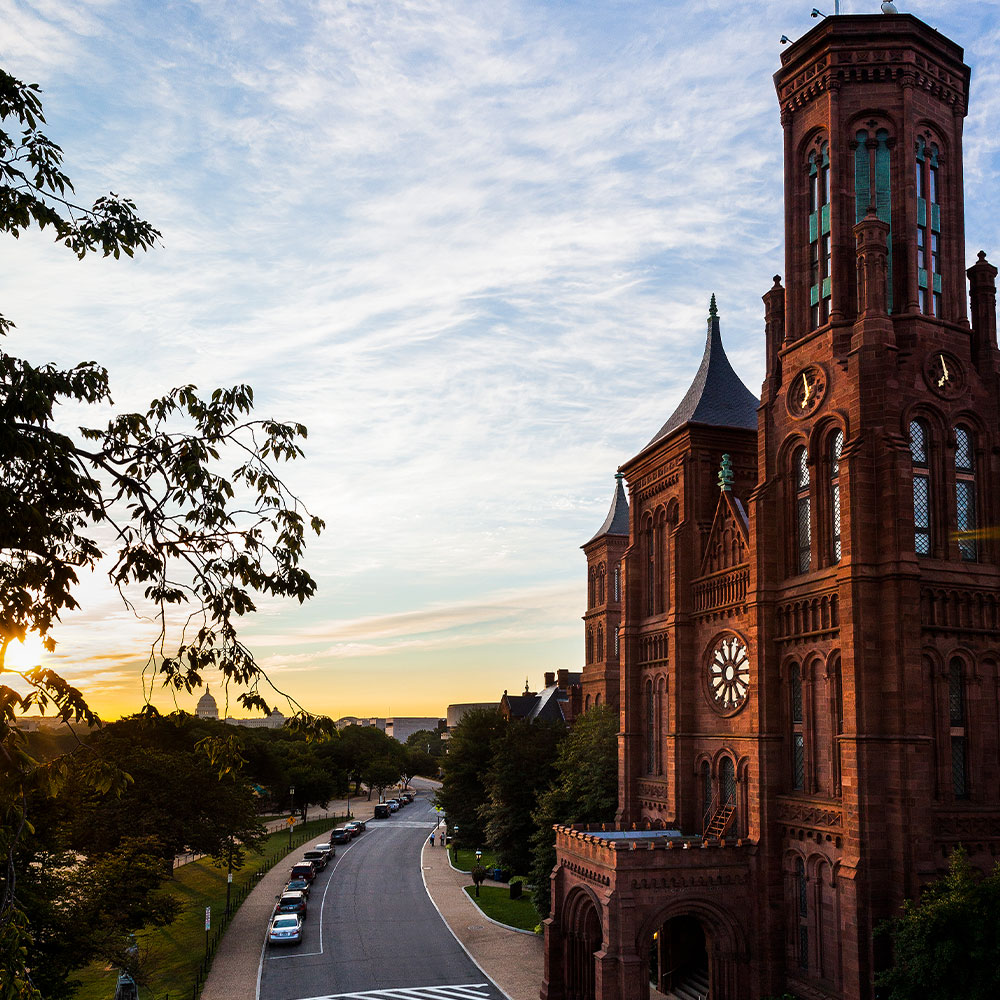
Free online courses from the Smithsonian through edX, an online learning destination. Start learning »
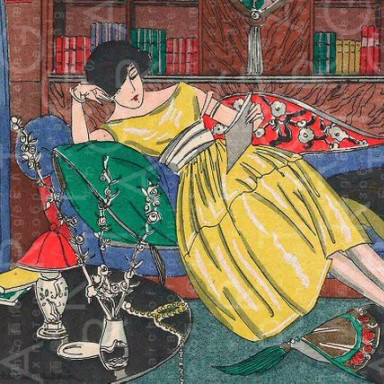
The Smithsonian Libraries has been scanning books and making them available online since 1997 but it wasn't until 2007, when we began digitizing for the Biodiversity Heritage Library (BHL), that we transitioned to "mass" scanning. Since then, we have digitized over 25,000 items containing nearly 10 million pages for the BHL from our collections in zoology, botany, agriculture, paleozoology and paleobotany, along with some history, anthropology, horticulture and geology titles. Check out the library »

Education is at the core of our mission – the increase and diffusion of knowledge – from informal education for students to lesson plans and professional development for teachers. A wealth of resources and digital tools support inquiry-based learning and active engagement to spark creativity and curiosity. Explore the resources »
OPEN ACCESS
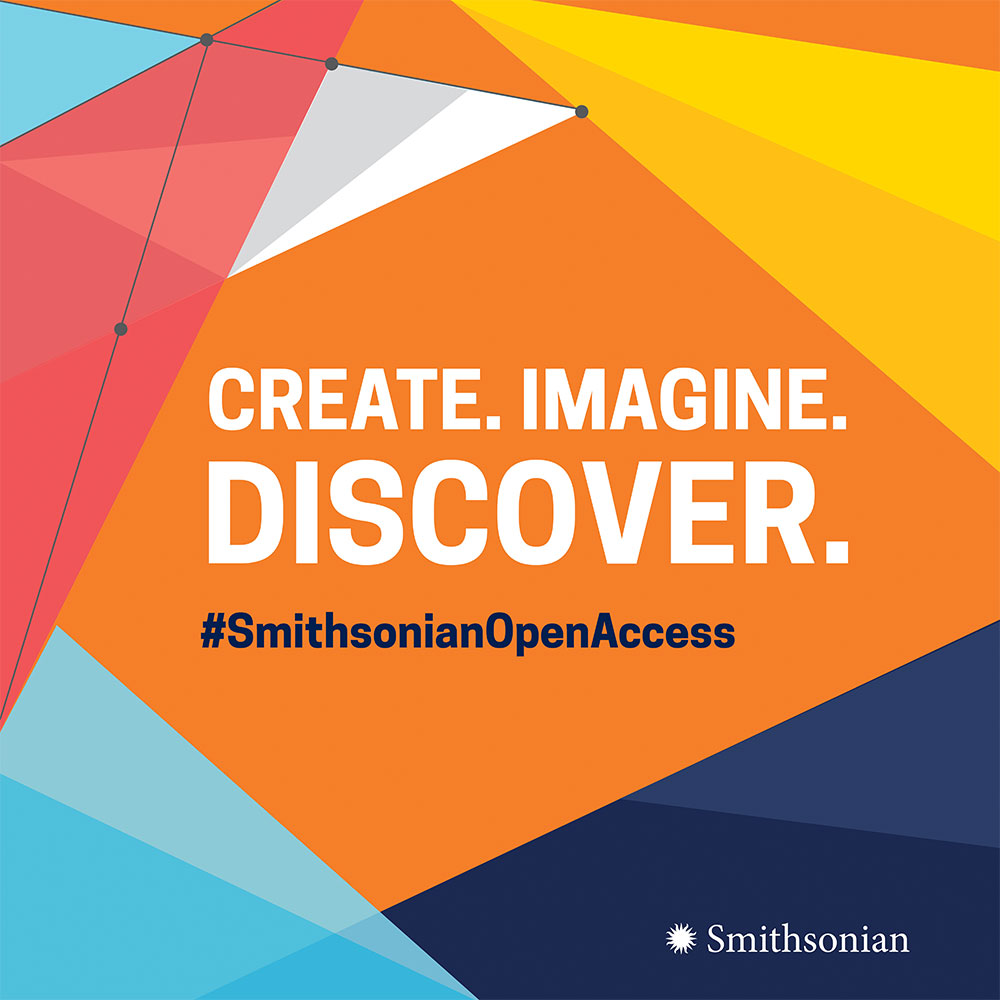
Open Access truly makes the Smithsonian your Smithsonian. The initiative releases Smithsonian images, sound recordings, 3D models and more to the public by giving items a CC0 designation – meaning they are in the public domain and free of copyright restrictions. Download, share, and reuse Open Access assets from every Smithsonian museum, research center, library and the National Zoo, from portraits of historic Americans to 3D scans of dinosaur skeletons. Get started »
VIRTUAL TOURS
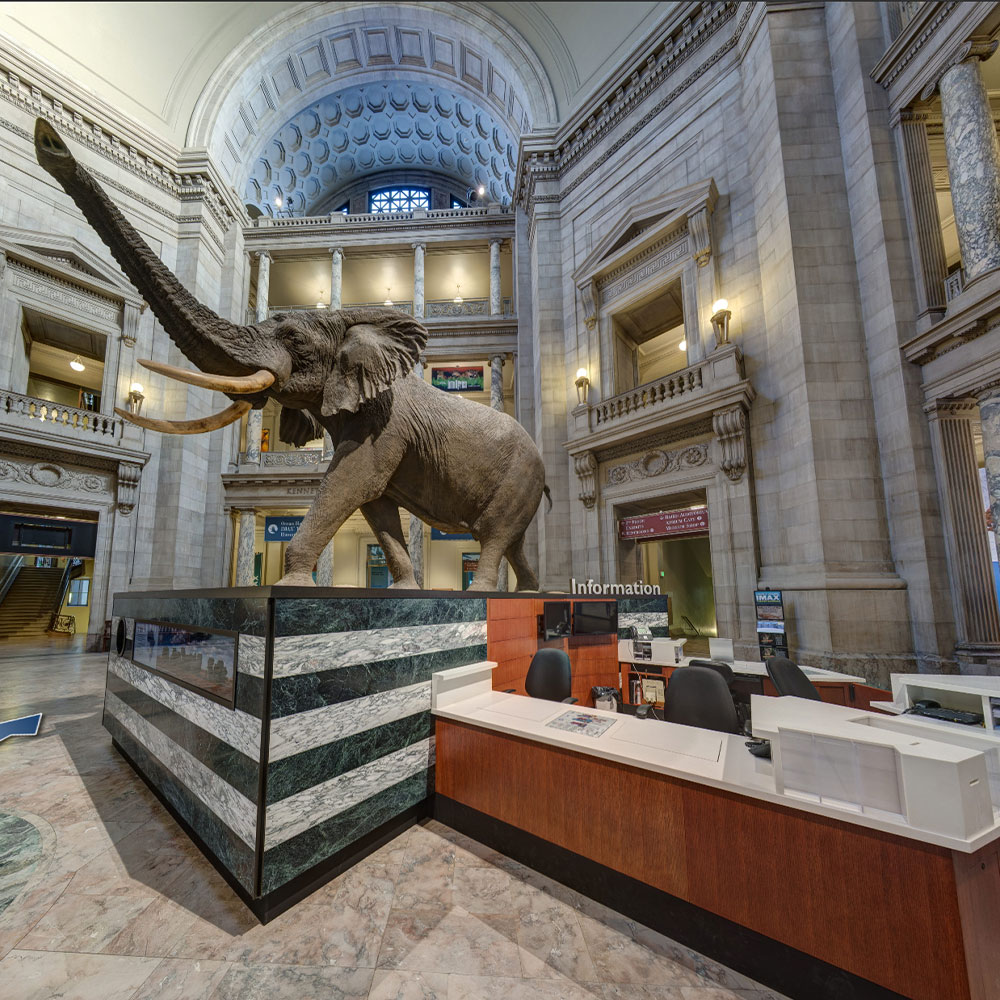
Did you know you can explore the entire National Museum of Natural History from the comfort of home? Explore entire exhibitions like the David H. Koch Hall of Fossils – Deep Time , the Ocean Hall and even the Butterfly Pavilion in incredible detail, down to reading every sign! Start exploring » How to use this tour »
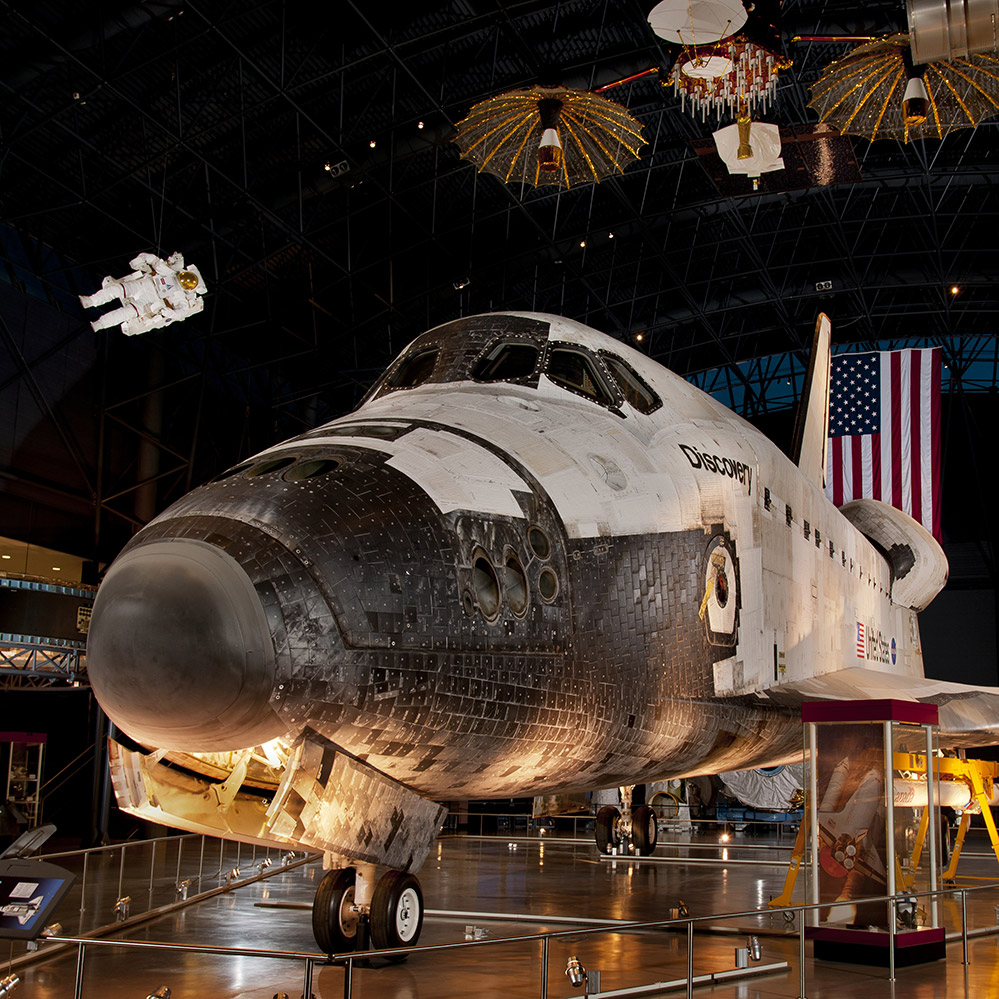
Orbiter, Space Shuttle, OV-103, Discovery. Smithsonian National Air and Space Museum.
In its 39 Earth-orbital missions, Space Shuttle Discovery carried 184 men and women, traveled almost 150 million miles and spent a total of 365 days in space. Take an immersive tour of the shuttle, including narration from the Smithsonian podcast AirSpace! Lift off! »
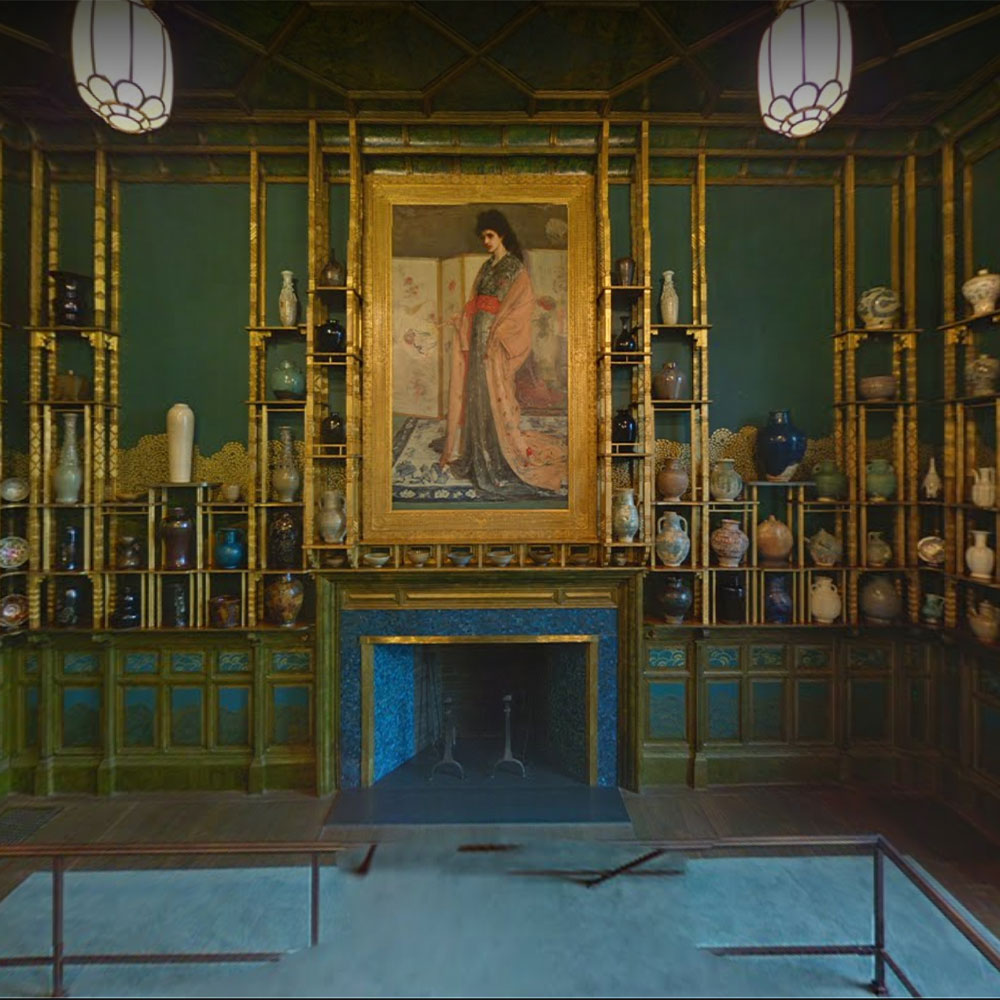
The Peacock Room has captivated visitors at the Freer Gallery of Art since its opening in 1923. Originally designed by artist James McNeill Whistler to showcase a Chinese blue-and-white porcelain collection, the room marries its avian motif with a striking use of color inspired by the arts of East Asia. Take a virtual step inside and experience this immersive work of art, explore the controversy around its creation, and trace the room’s travels from London to Detroit to Washington, DC. Step inside »
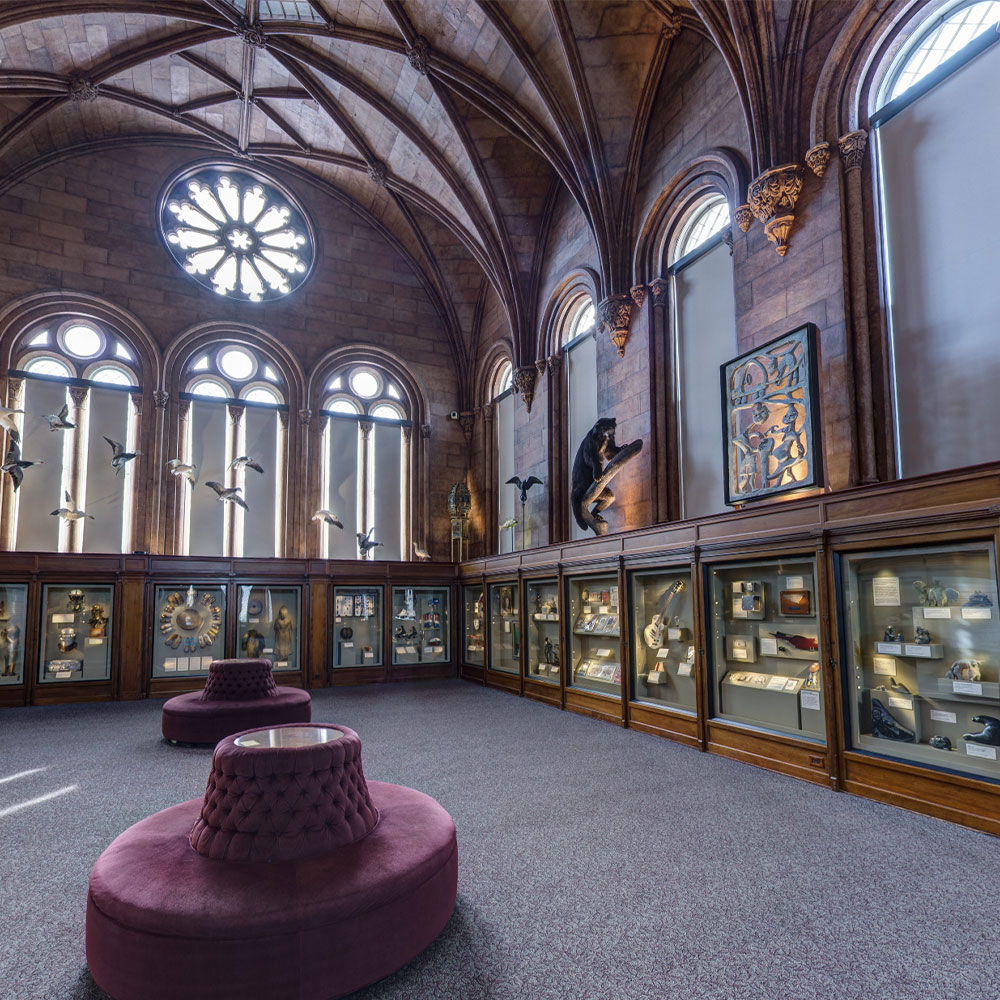
The Smithsonian Castle, the institution's oldest building, first opened to the public in 1849! While the Castle is currently closed for renovations, you can still explore this iconic building with a virtual tour that includes spaces like the Castle Commons, which features objects from every Smithsonian museum, the crypt of founder James Smithson, and the Castle Library. Enter the Castle » How to use this tour »

The Smithsonian's National Zoo and Conservation Biology Institute cares for thousands of animals every day as part of our mission to save species. And thanks to webcams streaming live 24/7, you can check in on our adorable residents whenever you'd like! From furry to scaly, discover fascinating species and get your daily cuteness fix by watching the latest baby animal additions grow and play. Tune in »
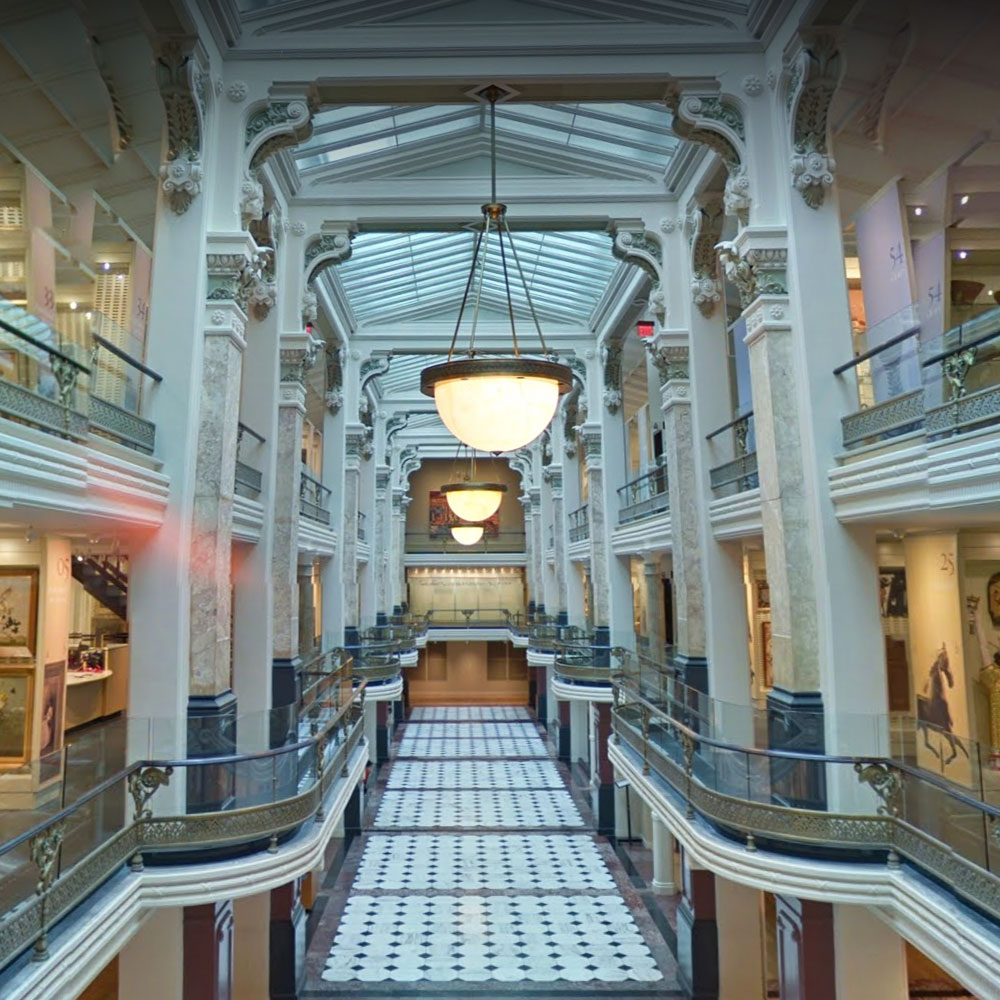
Take yourself on a tour through the Smithsonian American Art Museum through Google Arts & Culture. "Walk" through the halls of the entire museum and zoom in to your favorite paintings, photography, sculptures, and more for incredible detail. Explore American art from the colonial period to today, including folk and self-taught art. Start exploring »
DIGITAL EXHIBITIONS
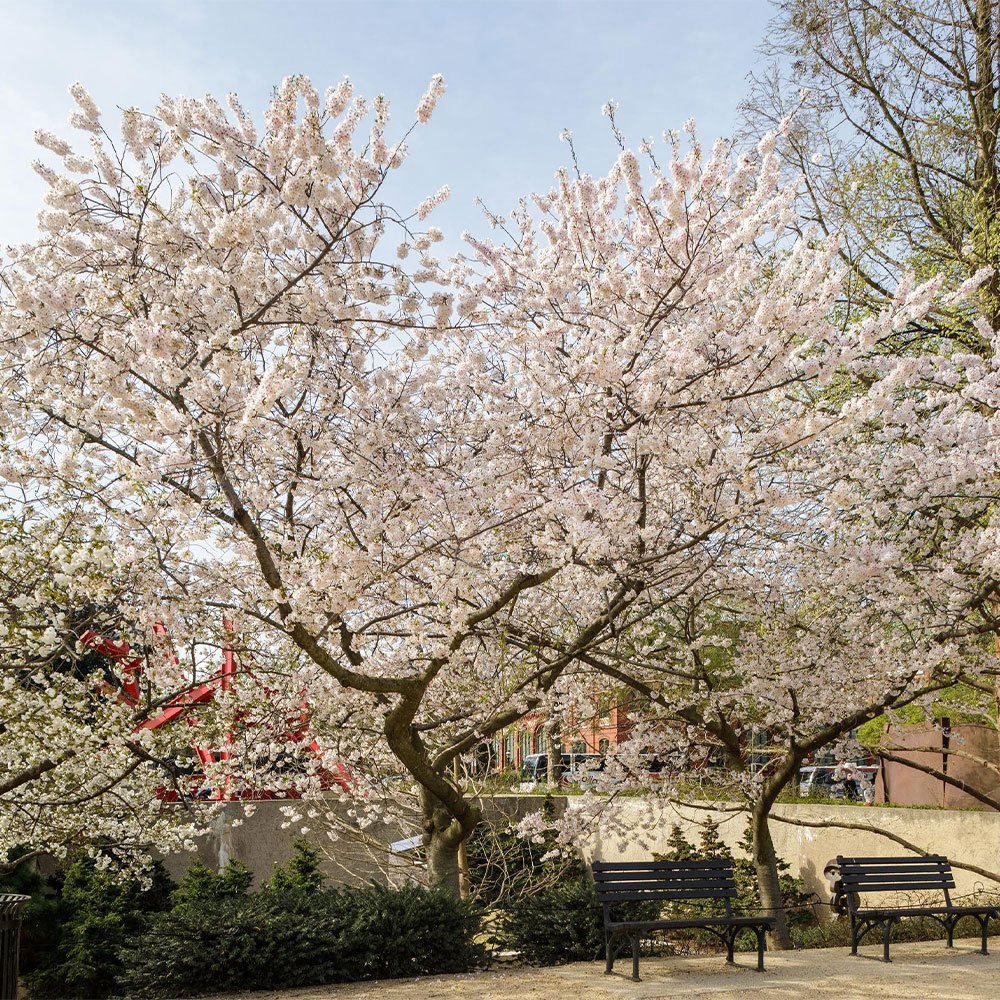
Smithsonian Gardens You don’t need to travel anywhere to see the famous cherry blossoms in Washington, D.C. See photos of the trees in full bloom around the National Mall including close-ups of the flowers and learn about the 6 different species of cherry blossoms in the Smithsonian Gardens. Stop and smell the cherries »
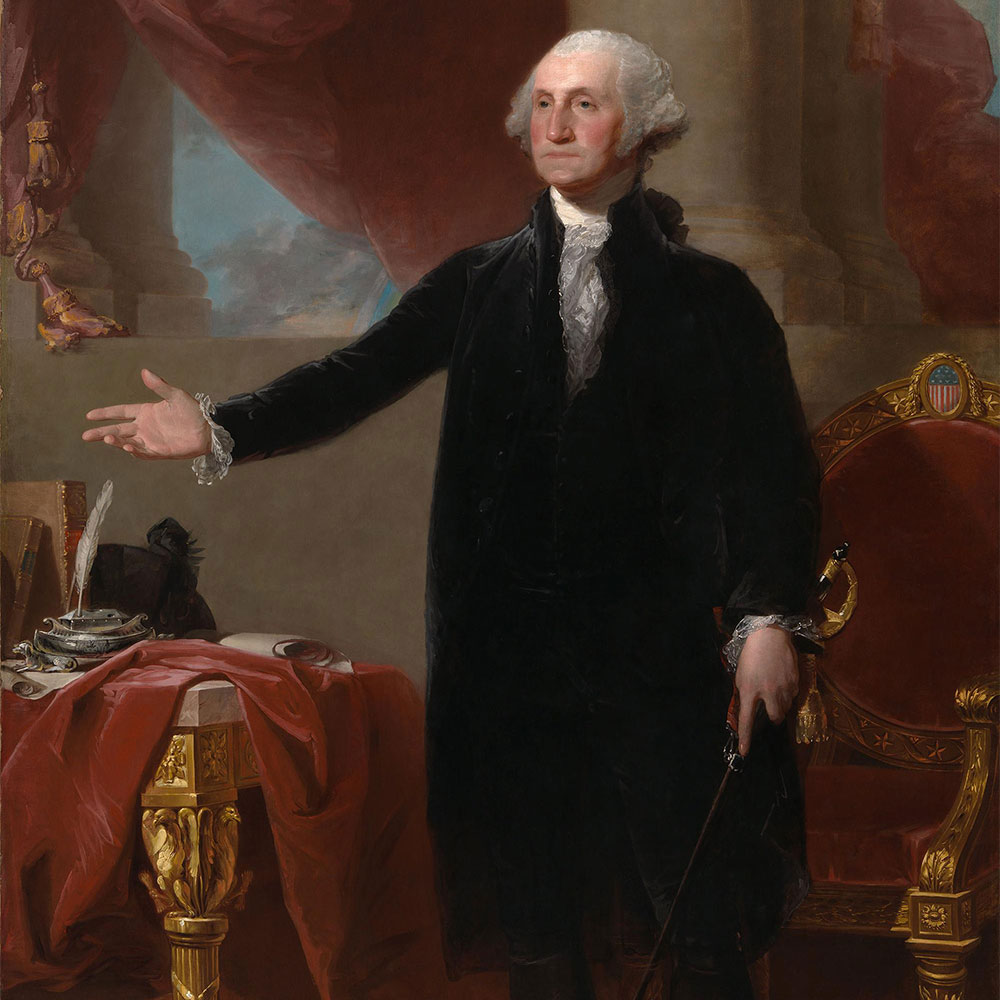
George Washington, 1796, Gilbert Stuart, National Portrait Gallery, Acquired as a gift to the nation through the generosity of the Donald W. Reynolds Foundation.
National Portrait Gallery Did you know the National Portrait Gallery has the nation’s only complete collection of presidential portraits outside the White House — and that you can see them all from home? Learn the story behind every portrait, including how the artist was selected, along with references, themes and stories within every painting. Enter the gallery »
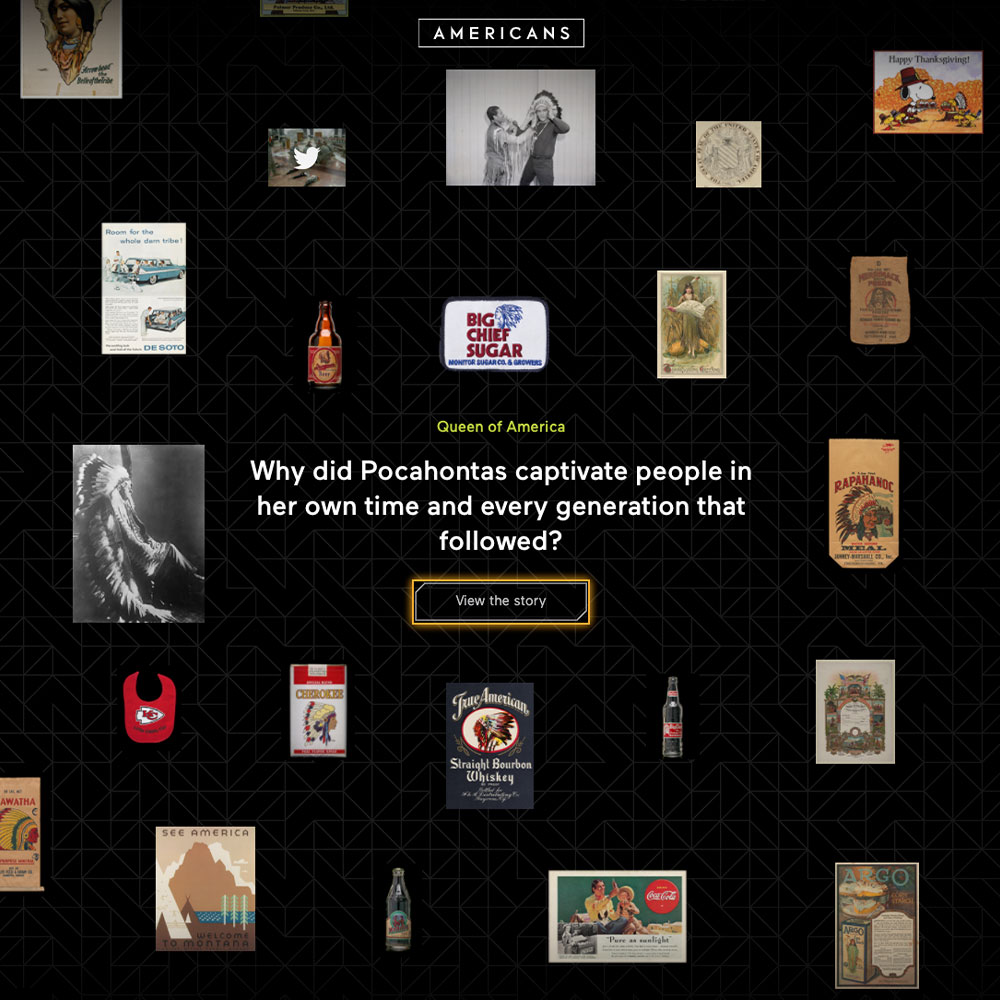
National Museum of the American Indian Americans highlights the ways in which American Indians have been part of the nation’s identity since before the country began. Pervasive, powerful, at times demeaning, the images, names, and stories reveal the deep connection between Americans and American Indians as well as how Indians have been embedded in unexpected ways in the history, pop culture, and identity of the United States. Explore the exhibition »
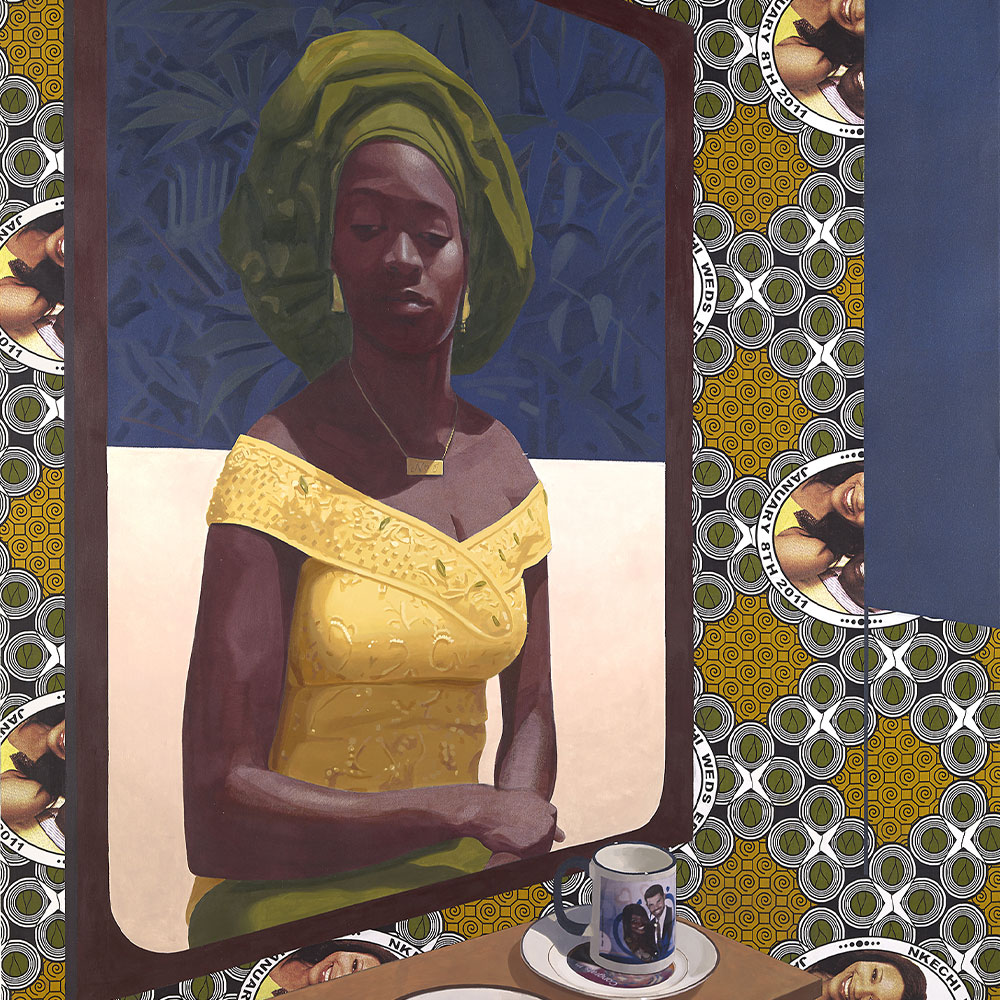
Wedding Souvenirs , 2016, Njideka Akunyili Crosby, National Museum of African Art.
National Museum of African Art Nearly fifty years after the release of the feminist anthem “I Am Woman,” women still find their numbers underrepresented in politics, business, and museum collections. While this exhibition draws its name from the 1970s song, it highlights a more contemporary feminism that is not based on any single narrative of womanhood, but explores the vital contributions of women to numerous issues including the environment, identity, politics, race, sexuality, social activism, faith, and more. See I am . . . »
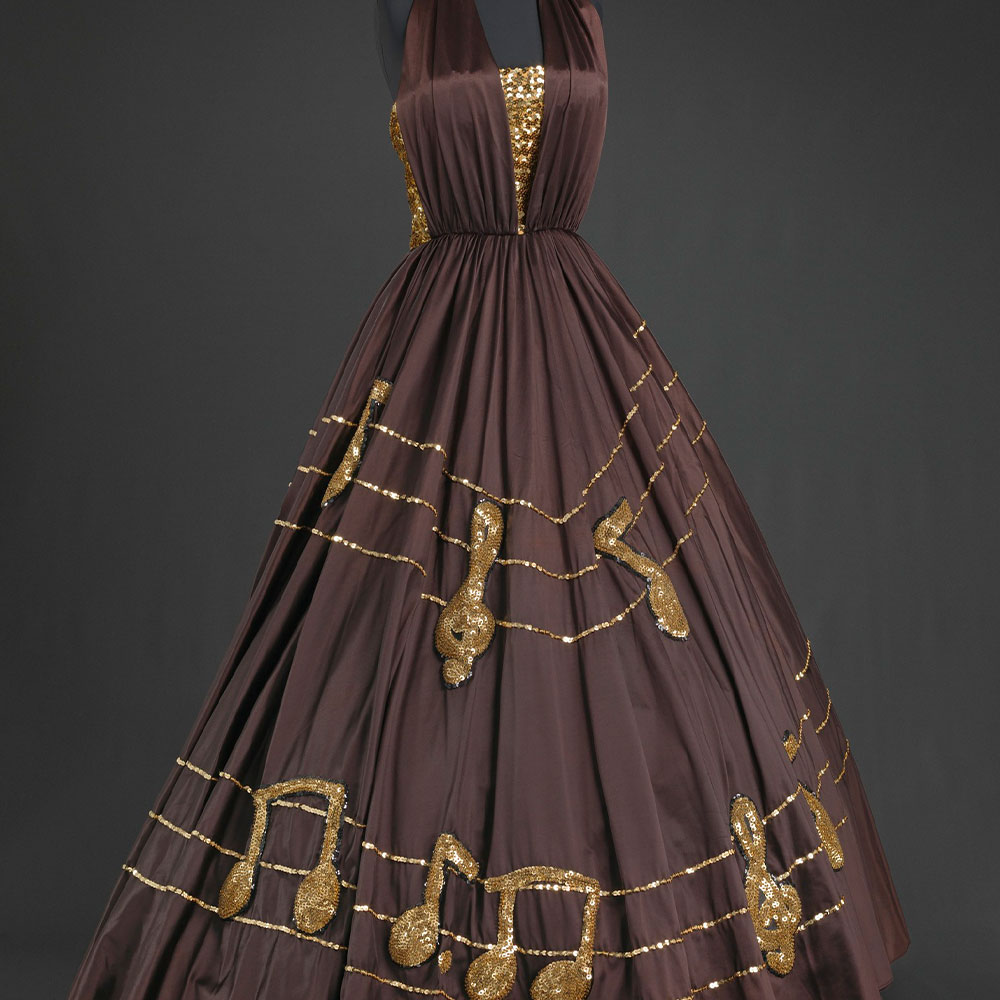
Brown satin halter top gown with gold music the... (1985 - 1990) by Peter Davy, designer, Gift of the Black Fashion Museum founded by Lois K. Alexander-Lane, Smithsonian National Museum of African American History and Culture.
National Museum of African American History and Culture This Google Cultural Institute (GCI) and NMAAHC online exhibition honors Lois K. Alexander-Lane and designer, Peter Davy. Lane's life-long efforts to document and preserve the contributions of black people to the world of fashion were and continue to be a monumental achievement. Founded by Lane in 1979, the Black Fashion Museum collected and exhibited the creations of numerous designers of color, including Caribbean designer Peter Davy. Take a look »
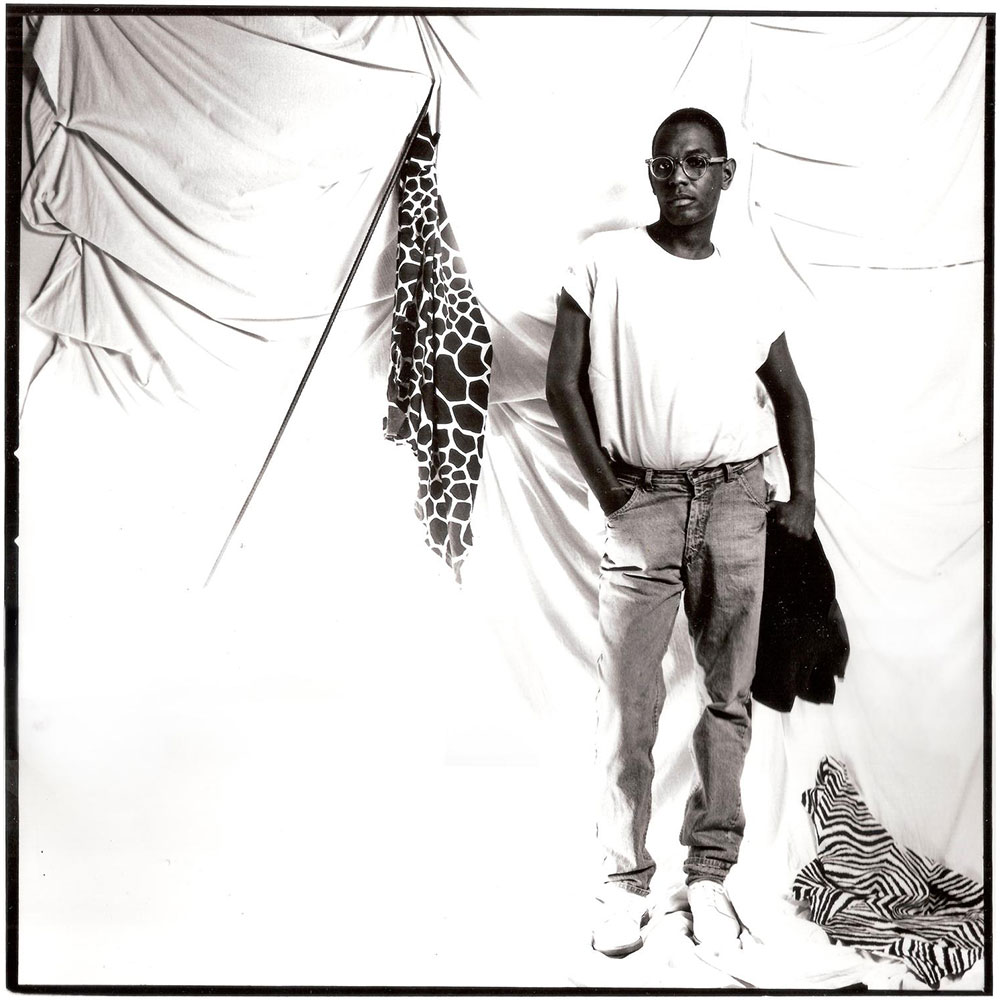
Portrait of Willi Smith, Photographed by Kim Steele, ca. 1981
Cooper Hewitt, Smithsonian Design Museum During his twenty-year career Willi Smith (1948–1987) united fashion and American culture, marrying affordable, adaptable basics with avant-garde performance, film, art, and design. At the time of his sudden death from AIDS-related illness, Smith was considered to be the most commercially successful Black American designer of the 20th century and a pioneer of “street couture” — fashion inspired by the creativity of people from the cities to the suburbs that captured the egalitarian spirit of the age. View the archive »
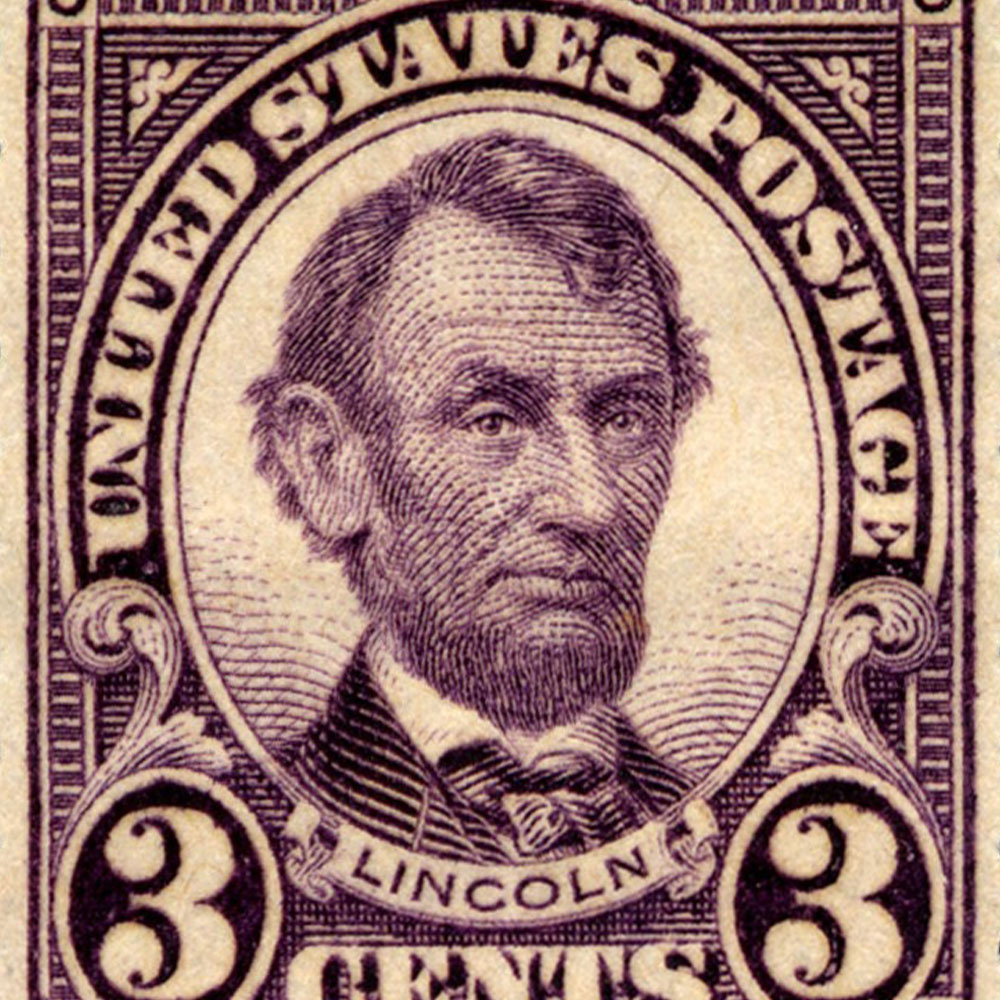
3c Lincoln single, 1925, National Postal Museum
National Postal Museum A dedicated public servant, Lincoln’s first civil service position began at the age of twenty-four as the postmaster of the New Salem, Illinois post office. With his inauguration on March 4, 1861, as the 16th president of the United States, Lincoln became the only president to have previously served as a town postmaster. Explore the exhibition »
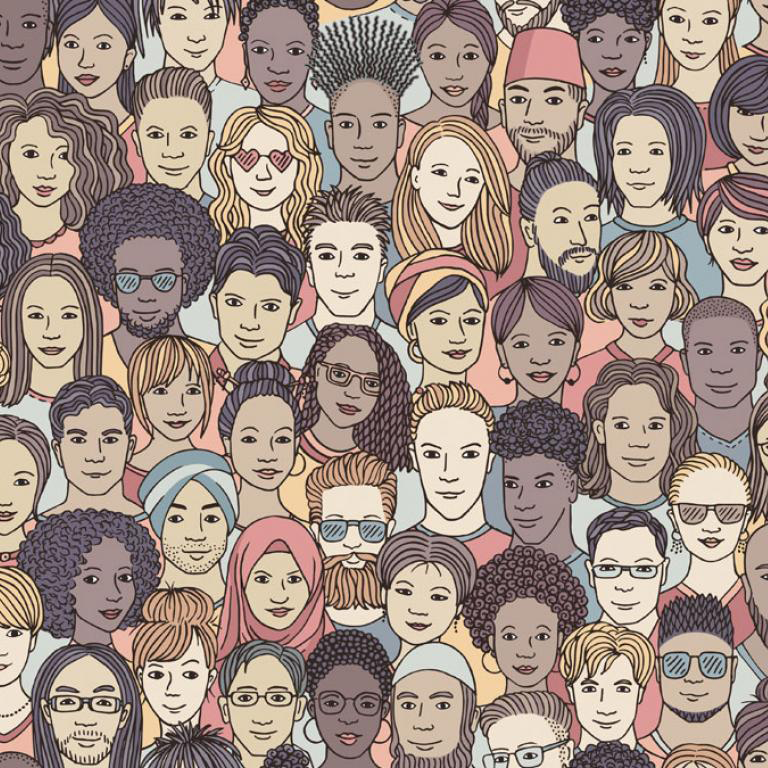
National Museum of African American History and Culture Since the opening of the museum, the number one question people ask us is how to talk about race. Every year we've refined our signature program, "Let's Talk! Teaching Race in the Classroom,"" and now we want to share what we've learned. Talking about race, although hard, is necessary. We are here to provide tools and guidance to empower your journey and inspire conversation. Learn more »
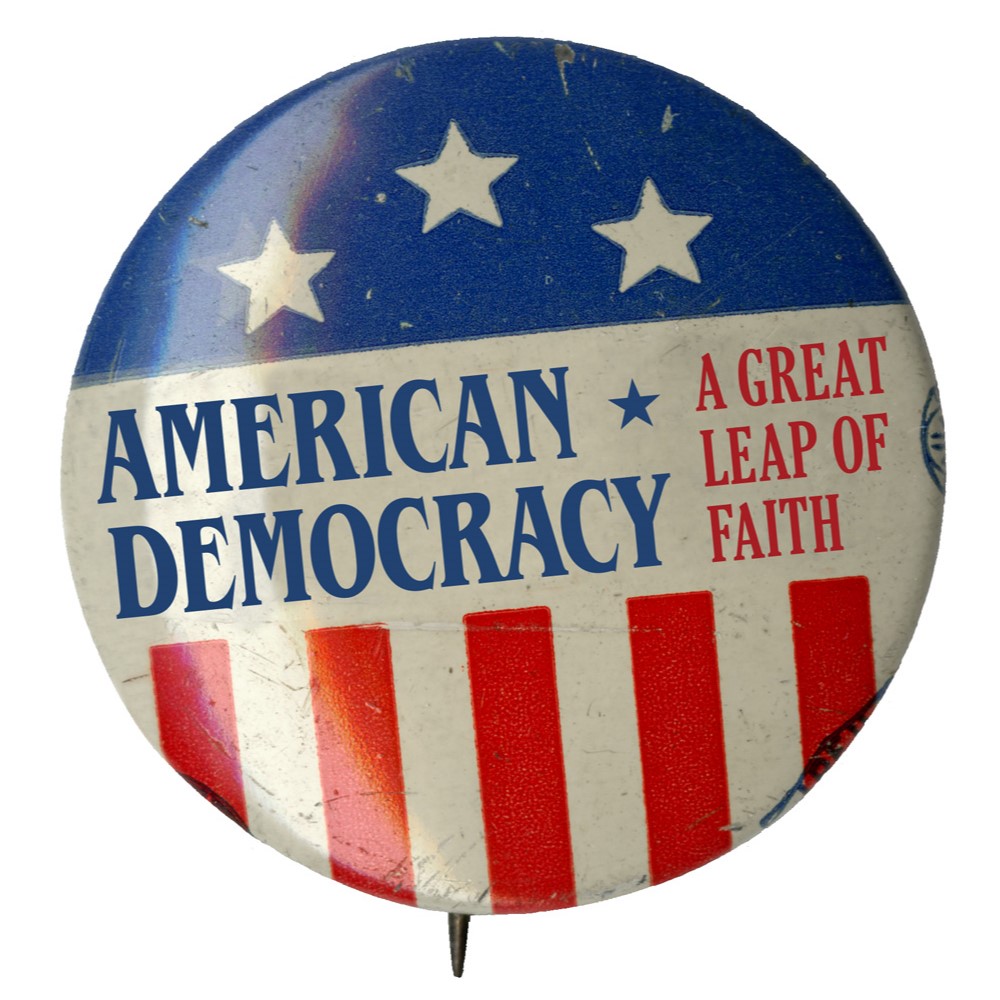
National Museum of American History What happens when a people decide to govern themselves? America’s national treasures come to life in this compelling exhibition that examines the bold experiment to create a government “of the people, by the people, and for the people.” This exhibit explores the history of citizen participation, debate, and compromise from the nation’s formation to today. Take the leap »

Asian Pacific American Center Poems, meditations, films, and other cultural nutrients for times like this. Curated with love by the Smithsonian Asian Pacific American Center. Open your package »

More than 154 million treasures fill the Smithsonian’s vaults, but where public view ends, Sidedoor begins. With the help of biologists, artists, historians, archaeologists, zookeepers, and astrophysicists, host Lizzie Peabody sneaks listeners through Smithsonian’s side door to search for stories that can’t be found anywhere else. Listen now »
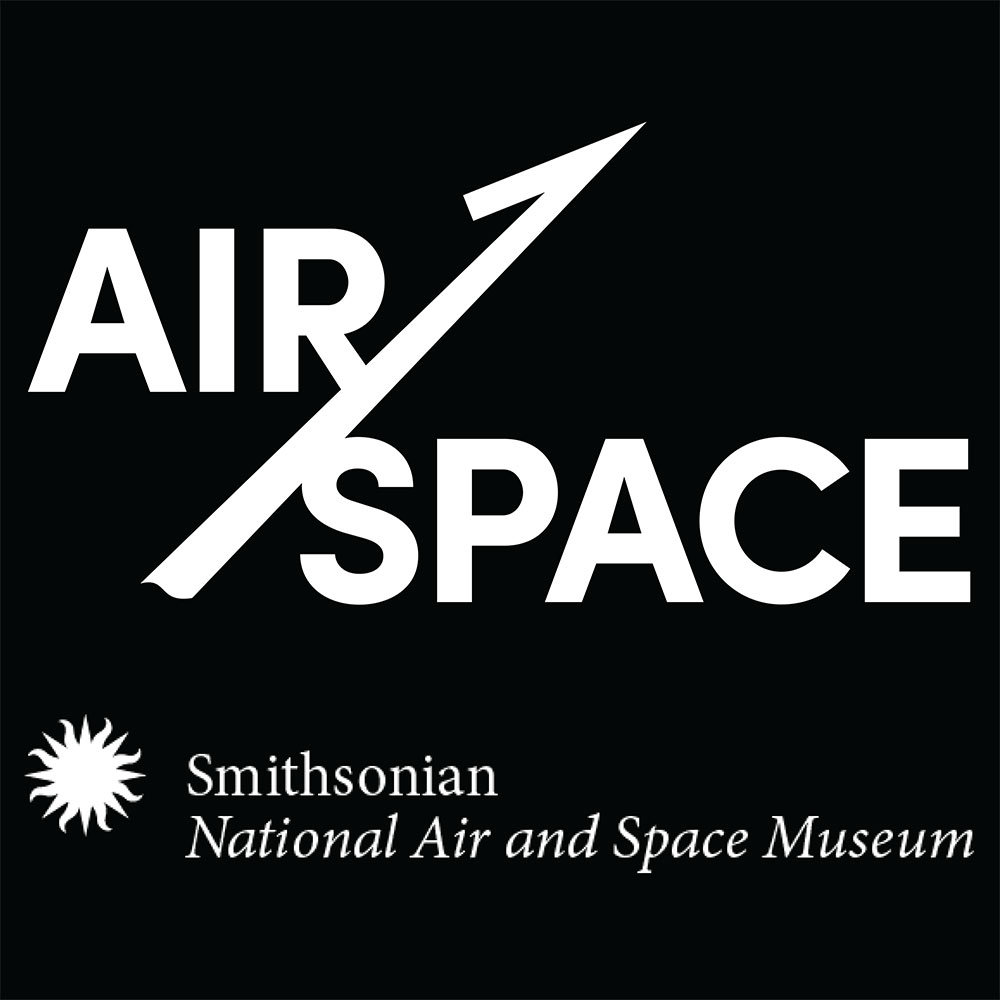
The National Air and Space Museum contains the largest and most significant collection of air- and spacecraft in the world. Join Emily, Matt, and Nick as they demystify one of the world’s most visited museums and explore why people are so fascinated with stories of exploration, innovation, and discovery. Grab your earbuds »
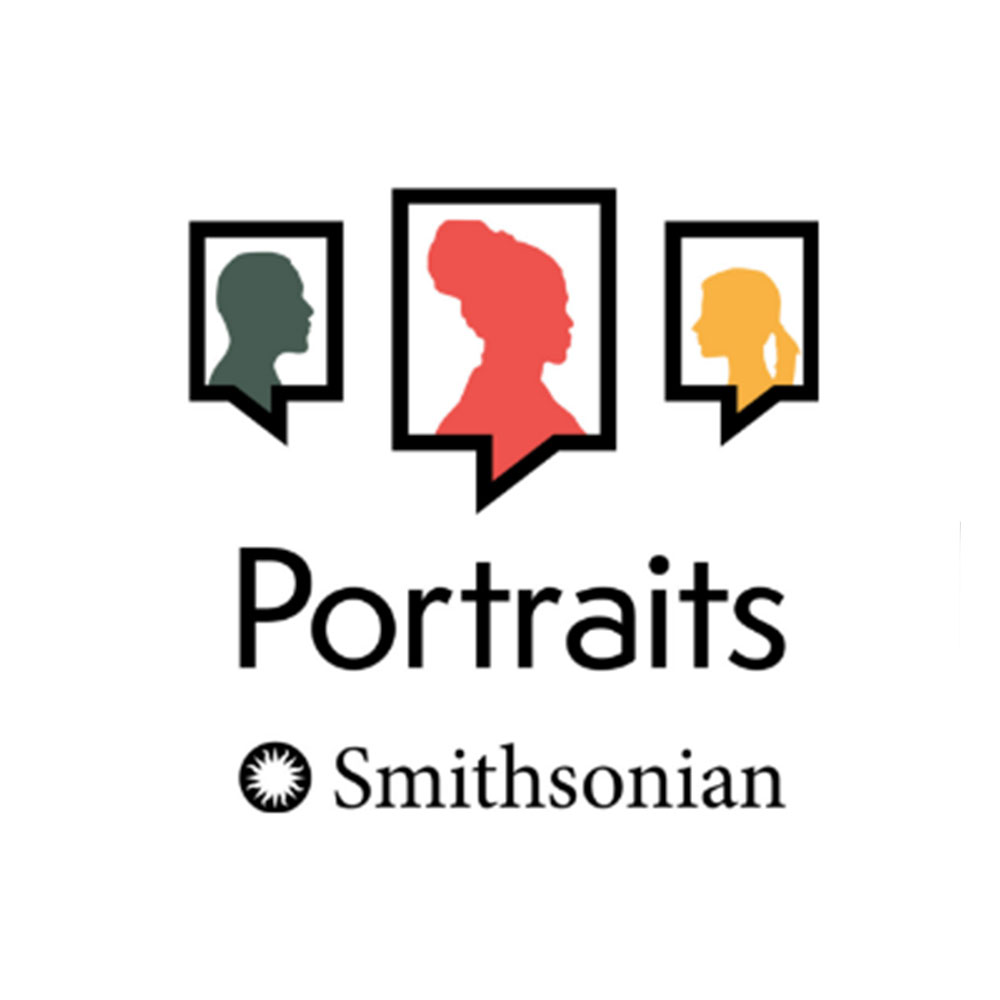
Art, biography, history and identity collide in this podcast from the Smithsonian National Portrait Gallery. Join Director Kim Sajet as she chats with artists, historians, and thought leaders about the big and small ways that portraits shape our world. Start listening »

Head over to our Virtual Visitor Center to find everything you need to make the most of your time with us including hours and locations, visitor guidelines, timed passes and tickets, current exhibitions, dining and shopping destinations, accessibility information, and much more! Plan your visit »
Finding Your Way Around
The control bar.
When you click the button and visit the tour, look for a control bar at the bottom of the screen. See the graphic below, which highlights some key functions.

The Heads Up Map
You'll see a map in the corner of the window. Click on any dot in the map to go directly to that section of the tour.
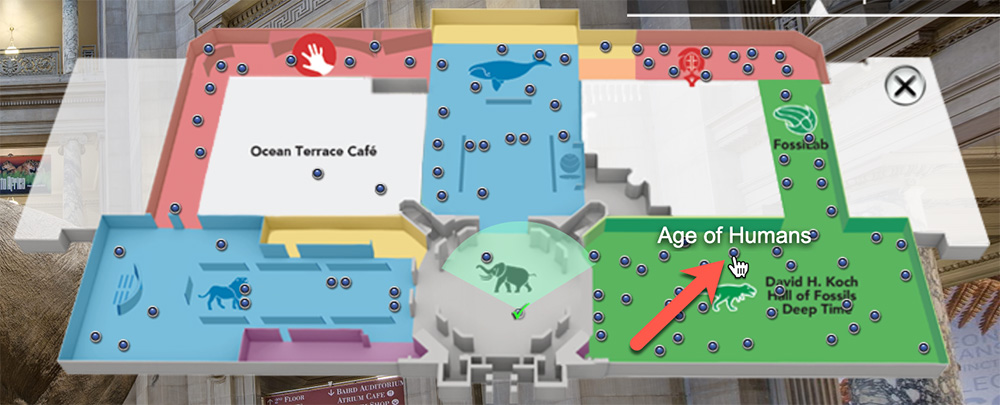
- --> © 2024 Smithsonian
- --> Privacy Policy
- --> Terms of Use
- Powered by Blackbaud
Site Navigation
Online exhibitions.
Unable to visit or missed seeing an exhibition before it closed? Many of our in-person exhibitions have online companions.
No results match your query. Reset
Smithsonian Castle Virtual Tour
Momma Wanderlust - Curating Cultural Travels for Families

Smithsonian Museum Virtual Tours

If you’re interested in visiting some of DC’s iconic sites from home, the Smithsonian museum virtual tours are a great option; keep reading for our favorites!
The best smithsonian museum virtual tours for your family.
Millions visit Washington, DC, each year to explore and visit some of the country’s most iconic landmarks and world-class museums. If you want to explore space, watch live animals, enjoy art installations, learn about famous women throughout history and the Black experience in America, I have some great news for you. You still can, virtually.
I’ve put together a list of Smithsonian museums that you enjoy from the comfort of your home.
National Museum of African American History & Culture Virtual Tour
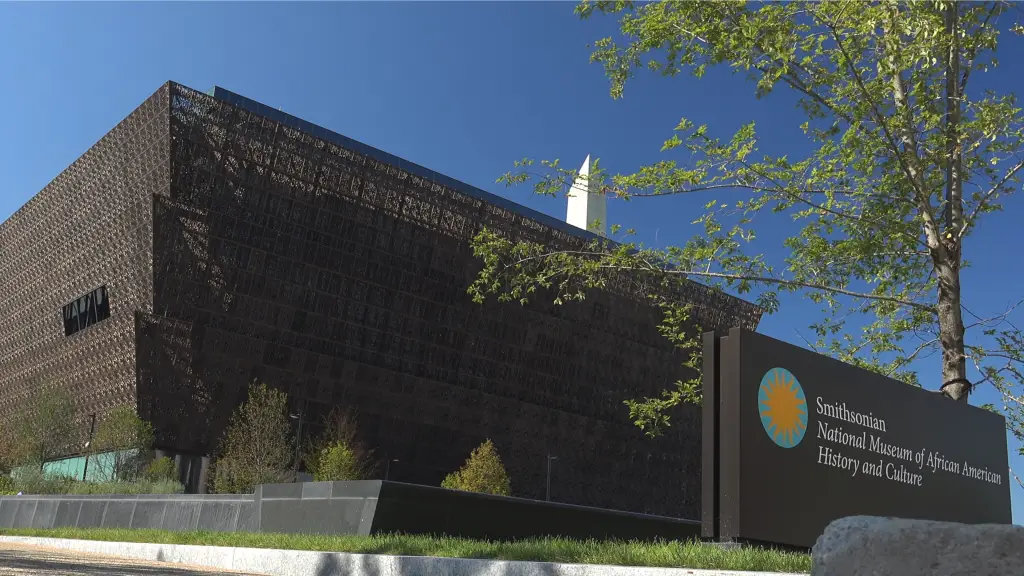
National Museum of African American History and Culture Courtesy: bakdc/Shutterstock.com
The National Museum of African American History and Culture (NMAAHC) is one of the many Smithsonian Institute museums located in Washington, DC. Nearly 5 million people have visited the NMAAHC since it opened in September 2016, which makes it one of the most popular museums in DC. So, now is a great time to check out the museum virtually.
There are a number of collections available for viewing on the museum’s website. The site also features a Learning Lab for children ages 0-8, which could be a great addition to your distance learning curriculum. The NMAAHC is one of a number of African American History museums you can explore from home.
Smithsonian National Zoo Virtual Tour

Here are links to the most popular live cam animals:
National Air & Space Museum Virtual Tour
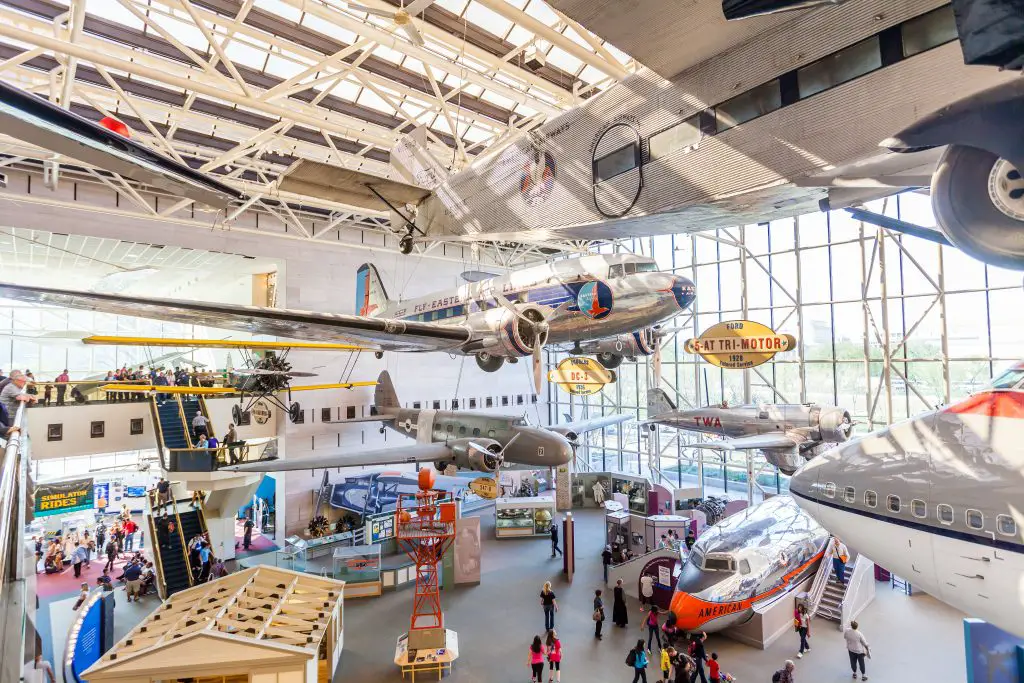
National Air & Space Museum Courtesy: f11photo/Shutterstock.com
If you’re interested in all things aviation and spacecraft, you can explore the National Air & Space Museum virtually as well. The Air & Space Museum is home to the Apollo 11 Command Module and Friendship 17 which was flown by John Glenn. These popular attractions make this the second most visited museum in the world. Discover 3D images of some of the museum’s most popular attractions, and learn about space pioneers on the museum’s website. There’s also an entire section dedicated to Activities and Games. My kiddos have thoroughly enjoyed the Geography from Space activity. The website also has a number of STEM Resources that might be helpful.
National Museum of Natural History Virtual Tour
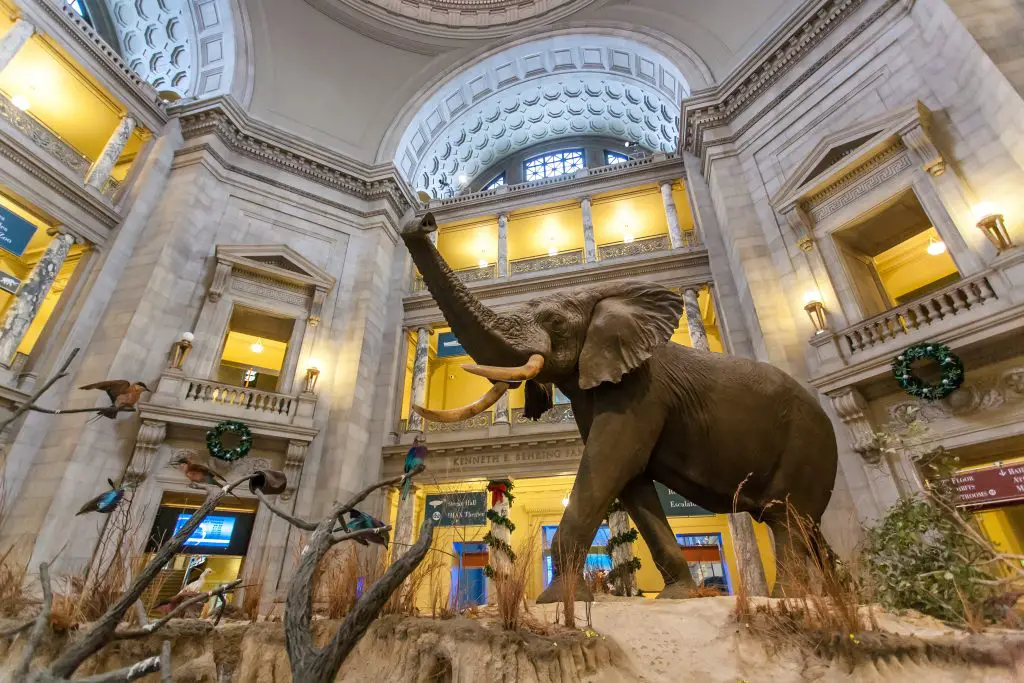
National Museum of Natural History Courtesy: Kamira/ Shutterstock.com
The National Museum of Natural History is one of my favorite museums in DC. It’s the home of the Hall of Mammals, Insect Zoo, and Ocean Hall. The Natural History Museum has a host of exhibits that can be explored on their website. The website also has a number of digital learning and teaching resources.
The United States Holocaust Memorial Museum Virtual Tour
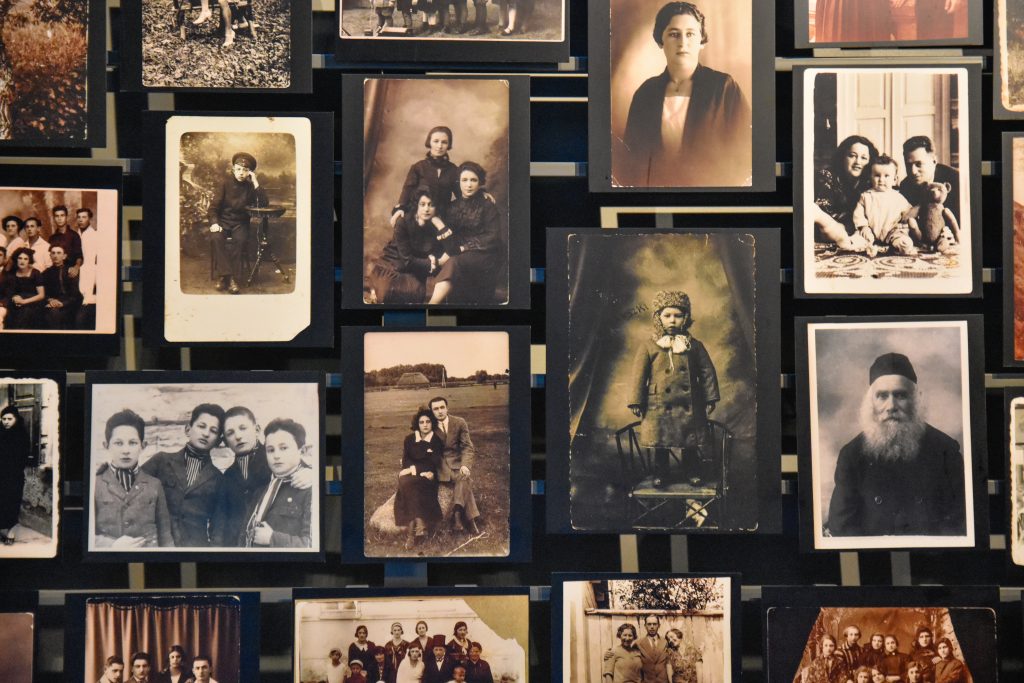
U.S. Holocaust Memorial Museum Courtesy: GiuseppeCrimeni/ Shutterstock.com
The U.S. Holocaust Memorial Museum is offering virtual field trips. Both parents and students can explore nine different exhibits: The Holocaust, the Hall of Witness, and Hall of Remembrance as well as a conservation lab where viewers can learn how museum staff works to preserve and present Holocaust history.
Smithsonian National Portrait Gallery Virtual Tour
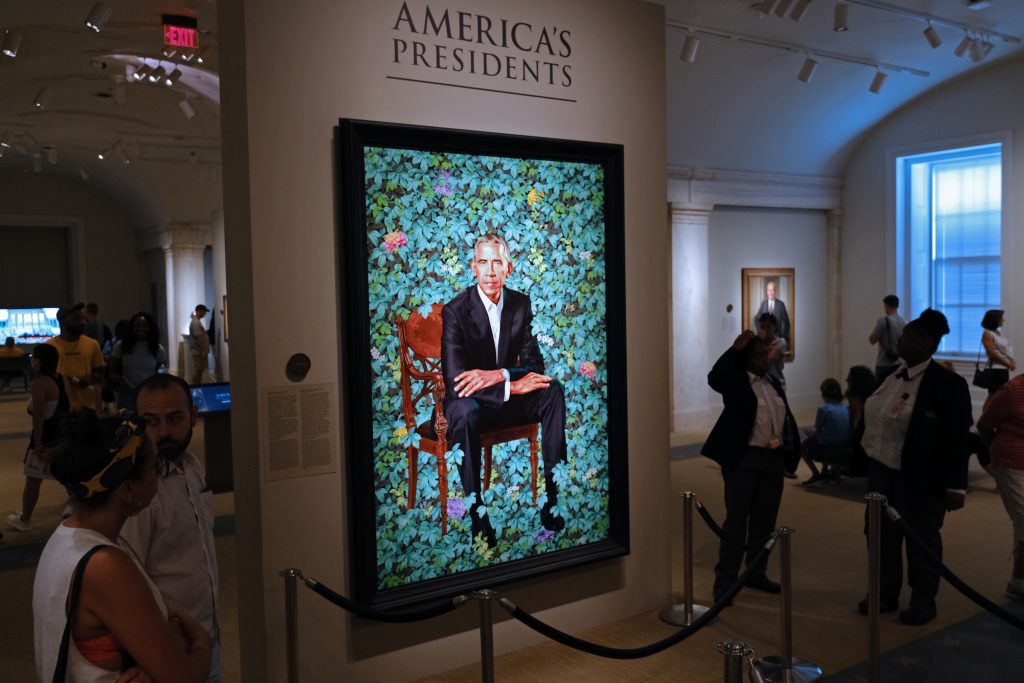
National Portrait Gallery Courtesy: Matt Smith/ Shutterstock.com
Presidents, poets, and activists have been immortalized on the canvases that are on display in the Smithsonian’s National Portrait Gallery. Some National Portrait Gallery’s most popular paintings, sculptures, and photos are now available virtually. Here are some of the popular exhibits that can be accessed online:
- Portraits of African Americans
- First Ladies from the National Portrait Gallery
- Votes for Women: A Portrait of Persistence

The Hirshorn Museum & Sculpture Garden Virtual Tour
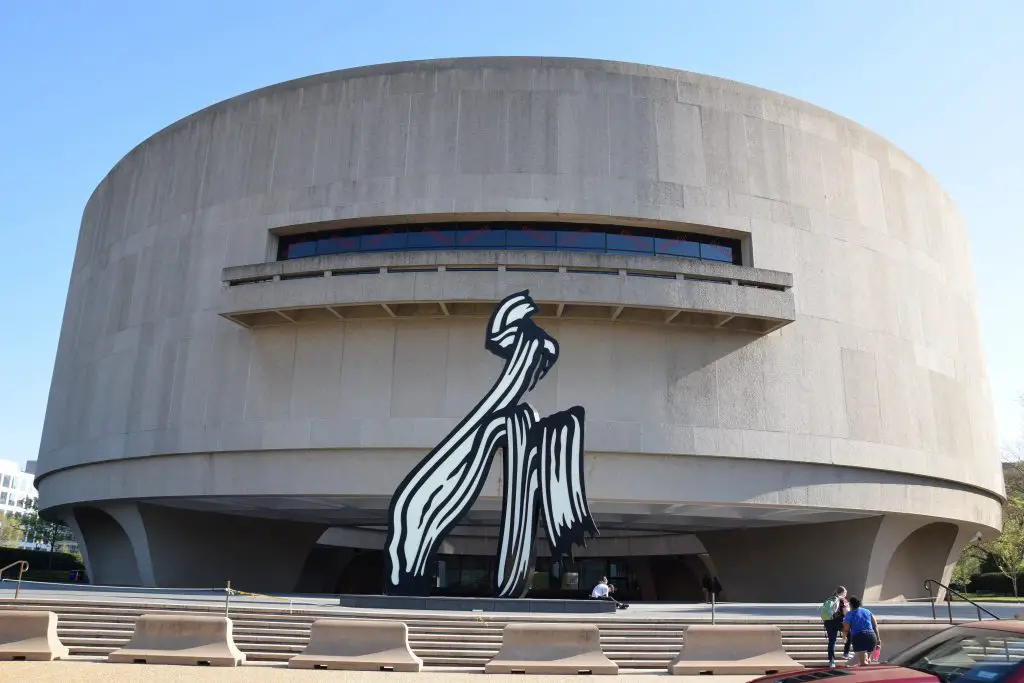
Some unique modern and contemporary art is on display at the Hirshhorn Museum and Sculpture Garden . Explore the Sculpture Garden through the museum’s online sculpture garden 1 and sculpture garden 2 . The museum also provides some at-home activities for children and virtual programs for art lovers.
Bonus: International Spy Musuem Virtual Tour
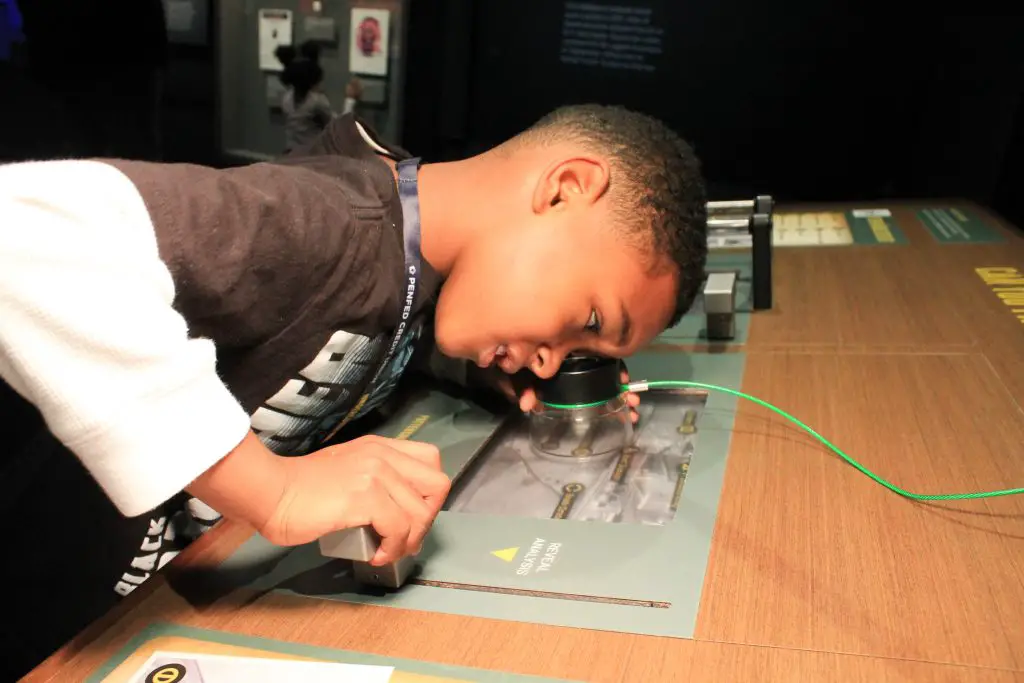
Interactive exhibits at the International Spy Museum
While this museum is not part of the Smithsonian Institution’s 19 museums, the International Spy Museum is one of my family’s favorites DC museums. If you or your kiddos are interested in spy games and espionage, this museum offers some free lesson plans and activities on their website. My family and I had a wonderful time when we visited the museum. Unlike the Smithsonian, there is an entrance fee for the International Spy Museum but some of their exhibits are available for free right now.
If you want a more outdoorsy virtual experience, read The World’s Greatest Attractions…Live In Your Living Room!
If you found this post on Smithsonian Museum Virtual Tours helpful, you might also like:
Related Articles

How to Plan a Family Vacation: 7 Practical Tips

Top 15 Family Travel Hacks

How to Travel More With a Full Time Job: 6 Top Tips

How to Save Money on Your Family Vacation: 14 Top Tips and Tricks

Simple Family Road Trip Tips
Pin for later:.
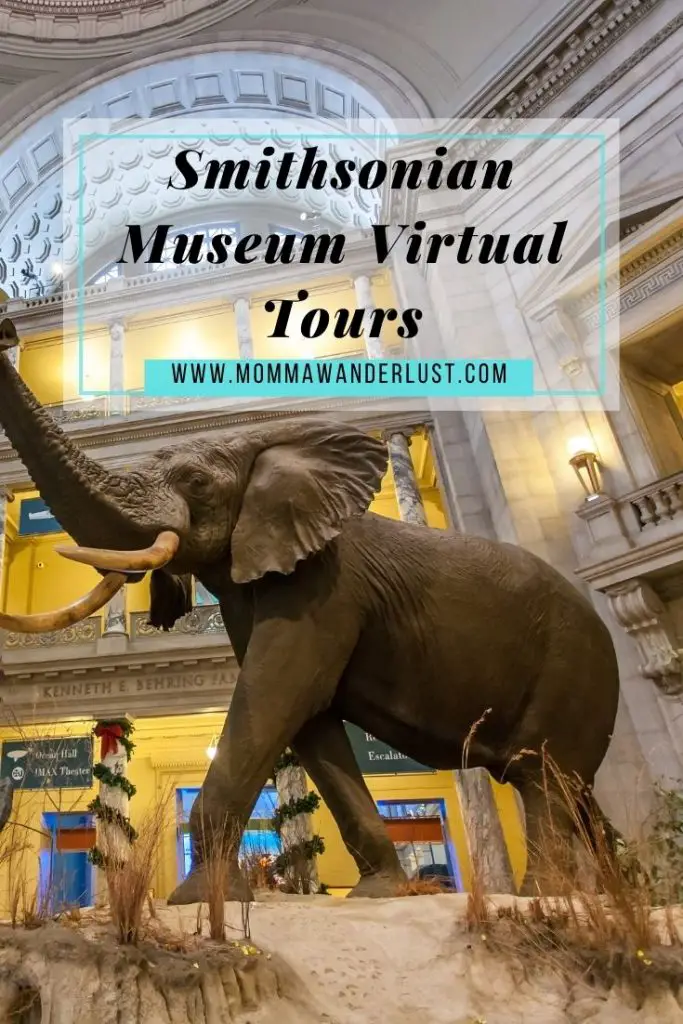
Up Next For You
The ultimate travel bucket list, things to do in cairo, thomasville, georgia: jack hadley black history museum tour, thomasville ga: a historical travel guide, top 16 best wanderlust movies for kids, things to do in estes park colorado, fun winter activities for families to do indoors..., 10 day egypt itinerary: cairo, aswan, abu simbel,..., 10 fun things to do with kids in..., the best things to do in orange va, things to do in pompano beach with kids, 10 fun things to do in palm springs with kids, leave a comment cancel reply.
Save my name, email, and website in this browser for the next time I comment.
From Cisterns to Temples, These Twelve Underground Worlds Are Open for Exploring
Some of these age-old subterranean spaces have even been transformed into amusement parks, art galleries and restaurants
/https://tf-cmsv2-smithsonianmag-media.s3.amazonaws.com/accounts/headshot/Shoshi_Parks_headshot.jpg)
Shoshi Parks
History Correspondent
:focal(1061x707:1062x708)/https://tf-cmsv2-smithsonianmag-media.s3.amazonaws.com/filer_public/d4/89/d48929bc-b96d-42db-bcda-d17dbb14dcdc/gettyimages-114825997.jpg)
Although the lives of humankind play out on the surface of the Earth, for millennia people have explored what lies beneath. Some had a practical reason for venturing underground—quarrying stone for building material, digging out cisterns or mining salt. Others were drawn there for spiritual purposes, building shrines or transforming natural caves into temples of worship.
Whatever the motive, the drive to experience the subterranean world seems to be a universal one. The number of places around the globe where people have looked under the surface to find safety, religious ecstasy or solutions to early technological challenges is astonishing. Some historical underground spaces have even taken on new identities in the modern era, transforming into amusement parks, art galleries and restaurants in recent years.
From Romania’s Salina Turda to California’s Forestiere Underground Gardens, these 12 incredible underground worlds are open for exploration.
Actun Tunichil Muknal
San Ignacio, Belize
/https://tf-cmsv2-smithsonianmag-media.s3.amazonaws.com/filer_public/8c/1c/8c1c2f1c-051c-4034-b677-2f3b00ae1661/2wg209x.jpg)
“In Classic Maya civilization, caves were considered portals to the underworld,” says Maya archaeologist Andrew Kindon. Actun Tunichil Muknal was uncovered in the thick, tropical jungle of Belize’s western Cayo District in 1989. Inside, researchers discovered a network of caverns rich with ritual artifacts over 1,000 years old: tools, weapons, ceramic vessels with ceremonial “kill” holes to release the spirits within them, and even cave formations modified into altars and otherworldly images. The remains of more than a dozen people have been found inside the cave, including the so-called Crystal Maiden , a sacrificial victim now believed to be a 17-year-old boy whose calcified bones sparkle in the light.
“Actun Tunichil Muknal is one of many caves in the region that likely served as sites of important spiritual pilgrimage,” says Kindon, and while it’s one of only a few open to the public, “there’s some concern over whether they should be allowed to enter such a sacred and fragile space.”
Those who do seek to visit won’t find Actun Tunichil Muknal, known locally as the ATM Cave, easy to reach. The only way to get to the three-mile-long cave is on a 45-minute hike through the Tapir Mountain Nature Reserve , followed by a swim to the entrance through a pool of water.
Basilica Cistern
/https://tf-cmsv2-smithsonianmag-media.s3.amazonaws.com/filer_public/ad/17/ad172550-4dfd-456a-beee-9e95ca307d07/gettyimages-1252330926.jpg)
Beneath Istanbul, the earth is honeycombed with cisterns, first carved in the sixth century to provide water for the rapidly growing Byzantine city. Now, close to 1,500 years later, archaeologists still do not know exactly where each one lies. The largest found to date, the Basilica Cistern , was built as the water source for the Great Palace of Constantinople in 527 C.E. Eventually, though, as new technology replaced older methods of water storage, the cistern was forgotten. The Ottomans rediscovered the chamber in the 15th century but, even today, the source of its water remains unknown. Renovated and opened to the public in 1987, the Basilica Cistern is now a subterranean palace of shadow and slowly shifting colored light, where haunting contemporary and ancient sculptures (including two massive Medusa heads) wade in the shallow pools. While none of Istanbul’s other cisterns draws the kind of crowds as the Basilica Cistern, a few have been preserved or repurposed into modern spaces, including the show-stopping fine dining restaurant The Sarnic .
Villa Torlonia
/https://tf-cmsv2-smithsonianmag-media.s3.amazonaws.com/filer_public/be/7e/be7e4af3-4eb0-4a50-9be8-e3f4b162d318/gettyimages-2152795201.jpg)
In 2011, an Italian government employee discovered a trapdoor inside a lavish, 200-year-old Roman palace, Villa Torlonia . Beneath it, a brick staircase descended 70 feet into a previously unknown underground bunker built to protect dictator Benito Mussolini, who lived at the estate with his family between 1929 and 1943. The secret chambers and passages—outfitted with anti-gas doors, an air purification system and four-foot-thick concrete walls—were opened to the public this spring. Although Mussolini was arrested before he could use the bunker, the immersive visitor experience includes a virtual re-enactment of how it would have felt to be hiding there during the World War II bombing of Rome by Allied forces.
Forestiere Underground Gardens
Fresno, California
/https://tf-cmsv2-smithsonianmag-media.s3.amazonaws.com/filer_public/14/e9/14e905c9-979e-40f6-9d21-d55970d52376/gettyimages-564087499.jpg)
“It was the Fresno summer heat that inspired Baldassare to move underground,” says Shera Franzman, director of operations for Forestiere Underground Gardens . Although the Sicilian immigrant Baldassare Forestiere had come to California’s Central Valley to establish a citrus orchard, he soon discovered his parched and sweltering land was full of inhospitable hardpan soil. So, in 1906, Forestiere, a onetime subway digger with a fourth-grade education, began to tunnel beneath it. By the time of his death in 1946, he’d created a subterranean agricultural oasis, an approximately ten-acre network of rooms, passageways and courtyards full of grape vines, berry bushes and groves of pomegranates, oranges and loquats.
“Baldassare designed his underground gardens with skylights that were strategically sized and placed to provide enough sunlight for his trees to grow, but not so much that he would lose the benefit of the cool underground home he had created for himself,” Franzman says. Forestiere dreamed of someday opening his grottos as a day resort for summer visitors. While he failed to get his wish in his lifetime, the gardens were opened to the public as a museum immediately after his death. Now a historic landmark, the underground gardens host guided tours seven days a week, and fruit from the innovator’s original groves is seasonally available at the on-site gift shop.
Elephanta Caves
Elephanta Island (Gharapuri), India
/https://tf-cmsv2-smithsonianmag-media.s3.amazonaws.com/filer_public/19/f7/19f7f493-c206-4368-9617-e2b770e148c1/gettyimages-536034840.jpg)
Although no one knows exactly when worshipers began carving the solid basalt cliffs of India’s Elephanta Island, archaeologists have found evidence of Buddhist occupation as early as the second century B.C.E. It wasn’t until at least the fifth century C.E., though, that the first of five rock-hewn Hindu temples was built to join two pre-existing Buddhist ones. The most elaborate and best preserved, a 128-foot-deep, human-made chamber, is dedicated to Shiva and filled with shrines, friezes and statues of the Hindu deity.
Unfortunately, most of the island’s other Hindu cave temples did not fare as well. While several still have some support columns, and the fragments of shrines and sculptures, it’s likely they were intentionally destroyed, possibly by the Portuguese, who converted one of two original Buddhist caves into a Christian church in the 16th or 17th century. Despite the damage, the Elephanta Caves remain a magnificent example of rock-cut architecture so universally valuable that, in 1987, UNESCO named them a World Heritage Site .
Gombak, Malaysia
/https://tf-cmsv2-smithsonianmag-media.s3.amazonaws.com/filer_public/10/ff/10ff8351-c21d-44b9-b022-f65c75d0db84/gettyimages-1472892553.jpg)
A little over a century ago, a limestone cave system north of Kuala Lumpur was reborn as a holy Hindu shrine. Once used for shelter by the Indigenous Temuan, then for mining bat guano, the Batu Caves got their first Hindu temple, the Sri Subramaniar Swamy Temple, in 1891. Dedicated to Murugan, the Hindu god of war, the temple has drawn Tamil pilgrims to celebrate Thaipusam , a Hindu festival held during the full moon of the Tamil month of Thai in January or February, there annually since 1892.
Over time, the multichambered site has welcomed a number of new shrines and statues. In 2006, a 140-foot-tall image of Murugan erected outside the cave became the tallest statue of the god in the world. Three other caves—the Art Gallery and Museum Caves, which tell the story of Murugan’s life, and the Ramayana Cave, which is painted in scenes from the Hindu epic Ramayana —are also open to visitors, and dancers perform hourly at the site. Guided tours are also available inside Dark Cave, a subterranean passage more than a mile long whose maw is located at step 204 of the 272-stair ascent to Murugan’s shrine.
Sacred Cenote at Chichen Itza
Yucatán, Mexico
/https://tf-cmsv2-smithsonianmag-media.s3.amazonaws.com/filer_public/00/7c/007c77b0-f743-4129-b439-4853bec38db9/gettyimages-1558577757.jpg)
The porous nature of the limestone karst that forms the foundation of Mexico’s Yucatán Peninsula has left the region riddled with caves and cenotes, or underground sinkholes filled with water. Like farther south in Belize, these were places of great spiritual significance to the ancient Maya. Among the most important was the Sacred Cenote at the city of Chichen Itza , says Kindon. “Archaeologists have found hundreds of offerings thrown into the water by priests and pilgrims, including jade, intricately carved plaques, and precious gold and copper objects rarely found at other sites,” he says. Human sacrifice also took place at the Sacred Cenote. A recent study confirmed that all of the victims, most of whom were between the ages of 3 and 6, were male, and many were twins or close familial relations. “In Maya mythology, the gods of the underworld are defeated by a pair of brothers called the Hero Twins,” says Kindon. “It’s likely the sacrifices at the Sacred Cenote were associated with that story.”
Visitors to Chichen Itza can see the Sacred Cenote from a hiking trail just above it, its waters green with algae, but swimming at this important archaeological site is prohibited. To take a dip, head to nearby Cenote Ik Kil , Cenote Yokdzonot or Cenote Kax Ek instead.
Derinkuyu Underground City
Nevsehir, Turkey
/https://tf-cmsv2-smithsonianmag-media.s3.amazonaws.com/filer_public/6a/ca/6aca70c2-8c4f-4ac2-9948-694f964a2295/gettyimages-1089024776.jpg)
Up to 20,000 people once lived in the city of Derinkuyu in Turkey’s Cappadocia region. But Derinkuyu was not like other cities. Everything there, from its churches, schools and cemeteries to its barns, bedrooms and kitchens, was built entirely underground.
Construction at Derinkuyu may have begun as early as the eighth century B.C.E., but it wasn’t until the eighth century C.E. that the city was fully inhabited as a subterranean refuge from the Arab-Byzantine wars. Local people found not just relief from battle there, but consistently cool temperatures ideal for food storage. Since then, many others have found sanctuary at Derinkuyu too, including Christians in the 14th and early 20th centur ies . Visitors today can explore about half of the 18-level city, which stretches almost 300 feet beneath the Earth’s surface.
Salina Turda
Transylvania, Romania
/https://tf-cmsv2-smithsonianmag-media.s3.amazonaws.com/filer_public/97/f3/97f39554-b6b4-4e1b-a119-c9737e4082de/2f8dcm3.jpg)
For over 2,000 years, humans have been extracting salt from beneath the earth at Turda, in Romania’s Transylvania region. With generation after generation chasing the precious mineral with pickaxes, hammers and chisels, the caverns grew into a full-scale salt mine containing multiple chambers up to 367 feet deep. Mining ended at Salina Turda in 1932, but its chambers weren’t forgotten. Salina Turda was used as a bomb shelter in World War II and, later, as a warehouse for cheese storage. In 1992, however, Salina Turda entered its most exciting phase yet, transforming into an otherworldly amusement park complete with a subterranean Ferris wheel, bowling alley, miniature golf course, a lake for paddle and rowboats, and a halotherapy spa. The remains of Salina Turda’s mining operations still remain, too, now eerily illuminated.
Napoli Sotterranea
Naples, Italy
/https://tf-cmsv2-smithsonianmag-media.s3.amazonaws.com/filer_public/0a/8f/0a8f7e3b-b7a4-4fbb-a2fb-fe641cabb22b/gettyimages-1177248526.jpg)
Some 2,400 years of history exist within what Arianna Albertini, director of Napoli Sotterranea , calls the “womb” of Naples. At its deepest depths, close to 130 feet below the surface, Greeks quarried great caverns from the rock to build the city’s landmarks. Romans converted the quarries into a network of aqueducts to supply water to the growing city. Later, other features they built, including Roman theaters, were buried as Naples modernized its landscape. It’s all still there, deep under the city, and new discoveries continue to be made. Recently, says Albertini, “drain sewers from the Bourbon period made out of riggiole [tiles] with blue color designs” were revealed beneath the floor of the fragmented remains of a Roman theater. But not everything visitors can see in Napoli Sotterranea is ancient. Tours also wind through tunnels that were converted into air raid shelters in World War II, and the 115-foot-deep Hypogeum Gardens , “a vegetable garden growing in the bowels of the Earth,” says Albertini, that has been producing traditional plants since 2015.
The Paris Catacombs
/https://tf-cmsv2-smithsonianmag-media.s3.amazonaws.com/filer_public/3c/f8/3cf8581b-00c9-48ce-b305-0bcec86365ac/gettyimages-1843519861.jpg)
The Paris Catacombs are an “empire of death,” according to the sign at their entrance. Beginning in 1785, more than six million individuals were buried there, in underground limestone quarries from which the stone of many of the city’s most famous monuments was extracted. A two-pronged solution for fighting the noxious scent of human decay and freeing up more land above ground for the living, the bones weren’t just stacked inside the Catacombs—they were used to build an entire labyrinth of macabre columns, arches and mosaics. One of the most famous subterranean sites in the world, the Catacombs first opened to the public in 1809. Since the 1950s, it has been illegal to go more than about a mile through the site’s 186 miles of tunnels, but Parisians have not always followed the rules. A special branch of the local police patrols the passageways in search of explorers and, occasionally, something more—like the hidden cinema and bar stocked with 1950s film noir classics and bottles of whiskey discovered in 2004.
Caves of Hercules
Tangier, Morocco
/https://tf-cmsv2-smithsonianmag-media.s3.amazonaws.com/filer_public/13/5a/135a37d9-e392-4040-9abd-d024a7488c86/gettyimages-613516154.jpg)
Millenia before ’80s rock gods Def Leppard turned up the volume inside the Caves of Hercules near Tangier, Morocco, it was a resting place for the superhumanly strong Greek and Roman hero Hercules—or so the legend goes. While archaeologists can’t verify that particular tale, they have some ideas about what came later. It was likely Phoenicians who broke through one of the cave’s walls, finding a sea-accessible shelter in which they left behind drawings of eyes in the shape of a map. Later, while quarrying for stone to make wheels, Berbers cut an entrance through the other end of the rock, tapping into the natural cavern that extended more than 18 miles to the Sea of Gibraltar. Three levels of the cave are open to visitors today, their walls carved into undulating waves by ancient tools. And up above a subterranean pool stands a statue of Hercules , bow drawn for battle.
Get the latest Travel & Culture stories in your inbox.
/https://tf-cmsv2-smithsonianmag-media.s3.amazonaws.com/accounts/headshot/Shoshi_Parks_headshot.jpg)
Shoshi Parks | READ MORE
Shoshi Parks is an anthropologist and freelance writer whose work on history, travel, food and the natural world has appeared in Atlas Obscura , Afar , NPR and a variety of other outlets. She lives in California's Bay Area.
Watch: How to explore famous museums around the world with Google Arts & Culture

Museums, galleries and landmarks house massive amounts of content to look at, learn from and interact with.
However, taking a trip to visit some of these places, whether it's in your city or halfway around the world, can be expensive. Plus, you might run out of time before you get to see everything. For example, the large crowd of people admiring the Girl with a Pearl Earring painting may mean you don't get as good a look as you hoped for while visiting the Mauritshuis Museum in the Netherlands. Or maybe you have one child who wants to see the dinosaur exhibits at the Smithsonian while another one wants to see rocket ships.
Well, if anything gets in the way of your culture vulture experience, you can forget the hassle and expense of a return visit and grab your laptop instead, because all you need to visit some of these museums and galleries is a computer with an internet connection.
Watch this video to see how to tour a museum from your couch.
Google Arts & Culture
You’re probably familiar with using Google Street View to look at a house or scope out the parking situation before checking out a new restaurant. Google Arts & Culture essentially uses that tool to invite you inside museums and galleries to explore more than 3,000 collections, including art in the Van Gogh Museum in Amsterdam and the Frida Kahlo Museum in Mexico. No passport required!
Google Arts & Culture also offers 3D Immersive Experiences , online exhibits, augmented reality games and so much more.
Reviewed-approved tech accessories
Purchases you make through our links may earn us and our publishing partners a commission.
Reviewed helps you find the best stuff and get the most out of what you already own. Our team of tech experts test everything from Apple AirPods and screen protectors to iPhone tripods and car mounts so you can shop for the best of the best.
- A rugged iPhone case: Casekoo Crystal Clear Protective Case
- A top wireless charger: Yootech Wireless Charger
- Our favorite screen protector: Ailun Glass Screen Protector
- Top-rated iPad: Apple iPad (9th Generation)
- The best portable battery pack: Mophie Powerstation Plus
- Durable phone car holders: Beam Electronics Phone Holder
- An iPhone tripod we love: Aureday Phone Tripod
- The best USB-C cable: Anker 6 Foot USB-C Cable, Pack of 2
Virtual Tours
The Smithsonian allows virtual visitors to digitally roam around some of its museums, including the Museum of Natural History and the National Air and Space Museum.
If historical landmarks or the great outdoors are more your style, let the National Park Service show you around. The NPS website offers virtual and narrated tours of sites like the Wesleyan Chapel at the Women’s Rights National Historical Park and places that aren’t open to the public, like the Nathan and Polly Johnson House.
You can also explore some of the country’s most beautiful national parks from your couch. Take a walk in Yellowstone National Park or climb a 300-foot Redwood Tree in virtual reality. Now, that's not something you get to do every day.
Open seven days a week.
10:00 a.m - 5:30 p.m., including holidays with the exception of December 25th when we are closed to the public.
10th St. & Constitution Ave. NW Washington, D.C. 20560
Visitors may enter from the National Mall on Madison Drive or Constitution Ave.
Admission is FREE.
Tickets are not required
Guidelines for Visiting
The Smithsonian is implementing COVID-19 safety measures based on guidance from the CDC and local governments. The latest guidelines are available at si.edu/visit/tips .
When is the museum open? The National Museum of Natural History is seven days a week from 10 a.m. to 5:30 p.m., except December 25.
Are passes necessary to enter the museum? No, passes are not needed to enter the museum.
Will there be security screening? For everyone’s safety, all visitors are required to go through screening during the security process. Please visit the Smithsonian’s security information page for more information on prohibited items.
All visitors are required to walk through a metal detector. Those unable to go through the metal detector will be hand-screened with an electronic wand by security personnel.
We encourage visitors to limit the number of personal belongings and bags brought into the museum as they may be subject to a thorough search. Limiting the items brought will increase your speed through security checkpoints and help us all maintain a safe social distance. Please note that we do not offer coat, bag, or locker storage at this time.
Will the museum cafés and retail shops be open?
The Atrium Café is open from 11:30am-3:30pm and the Ocean Terrace Café is open 11:30am-4:00pm. The Family Store, Gallery Store, and Gems and Minerals Store are open from 10am-5:30pm.
Is there a coat or bag check at the museum? We have limited locker storage available for small bags and items. Visitors are encouraged to travel as lightly as possible and refrain from bringing large bags and packs for the best museum experience.
Are there family-friendly restrooms? A restroom designated for family use is located on the 1st floor of the museum, off of the Sant Ocean Hall.
Can I bring my stroller, scooter, walker, wheelchair or any type of mobility device? The museum is accessible to visitors using strollers, scooters, walkers, wheelchairs, and mobility devices. There are elevators available to visitors on every floor of the museum.
Are wheelchairs available? A very limited number of manual wheelchairs are available free of charge on a first-come, first-served basis for use while visiting the museum. You are encouraged to bring a wheelchair with you due to limited availability.
How do I contact the museum with questions? For more information about visiting the museum, please email [email protected] .
Masks are not currently required to visit. While not required, all visitors who feel more comfortable wearing a face mask during their visit are encouraged to do so.
Our current health and safety measures are based on guidance from the Centers for Disease Control and Prevention (CDC) and local governments. These measures may change in response to changing CDC COVID-19 Community Levels, so we encourage visitors to regularly check our website before their visit for the latest guidelines.
Museum Address The museum is located on Madison Dr. NW, between 9th St NW and 12 St NW ( Google Map ). Visitors may enter on Madison Ave. or at 10th St. NW & Constitution Ave. NW.
Metro The closest Metro stations to the museum are the Federal Triangle Metro station, located on the Blue, Orange, and Silver lines; the Archives/Navy Memorial station on the Green and Yellow lines; and the Metro Center station on the Red line. View a map of the closest Metro stations .
Parking There are no Smithsonian Institution public parking facilities on the National Mall. There are a number of nearby commercial lots and garages which may have available parking. If you must drive, please see parking options . For additional information on bus parking, contact the National Park Service Mall Operations Office at 202-426-6841 .
For More: Visit our Getting Here and Parking Page .
The National Museum of Natural History is committed to providing inclusive experiences for all audiences. Please contact 202-633-3611 or send an email [email protected] for access services. For more information visit the Accessibility Information page .
Entrance All museum entrances and exits are accessible.
Parking The Smithsonian does not provide parking, but there are designated accessible spaces around the National Mall.
Service Animals Service dogs specially trained to assist a person with a disability are welcome in the museum.
Information for Visitors in a Wheelchair
- All of the museum's exhibitions are accessible by wheelchair, and all public floors of the museum can be reached by elevator.
- All theaters include wheelchair locations and companion seats.
- All food service areas are accessible by wheelchair with no steps, turnstiles, or other potential obstructions
- All museum restrooms are accessible to those with mobility disabilities or in wheelchairs. Family/companion care restrooms are located on the First Floor off the Rotunda via the Sant Ocean Hall.
Information for Visitors Who Are Deaf or Hard of Hearing
- Video presentations within exhibitions are open captioned.
- Induction loops are installed at the Rotunda Visitor Information Desk and the Worldwide Theater in the Hall of Human Origins.
- Assisted Listening Devices are available upon request for programs in Baird Auditorium and Q?rius Theater.
- Sign language interpretation or real-time captioning (CART) are available for public programs with a two week advanced notice. To request this service, please call (202) 633-5238 or e-mail [email protected] .
Information for Visitors Who Are Blind or Partially Sighted
- Tactile objects are provided for all visitors at designated points throughout the museum. A full list of tactile objects can be found at the Information Desks in large print and braille.
- Verbally-described tours with tactile elements designed for visitors with visual disabilities are available with a two-week advanced notice. Subject to volunteer availability. To request this service, please call (202) 633-5238 or e-mail [email protected] .
- Apple Store: https://apps.apple.com/us/app/deep-time-audio-description/id1465972882?ls=1
- Google Play: https://play.google.com/store/apps/details?id=edu.si.natualhistory.deeptime
Information for Visitors with Developmental, Learning & Sensory Disabilities
Calendar of Events This calendar of events highlights some of the programs and activities that will be happening at the museum.
For More: Visit Our Accessibility Information Page
We are committed to visitor safety and have security measures in place to keep you and Museum objects protected. When you arrive at the Museum you can expect a full security screening similar to what you might experience at the airport, except you can keep your shoes and belts on.
Items Not Permitted in the Museum
- Firearms / ammunition
- Knives (including pen, pocket or "Swiss Army"-style knives)
- Aerosol cans (including pepper spray and Mace)
- Tools (screwdrivers, awls, etc.)
- Placards, signs, or banners
- Pets (except service animals)
- Wagons (collapsible and fixed wheel)
Items You Are Prohibited from Using Inside the Museum
- Selfie sticks
- E-cigarettes
- Skateboards / scooters
Items Permitted in the Museum
- Mobility aids (canes, walkers, etc.)
- Service animals (not emotional support animals)
- Bottled water
Check the Smithsonian's security policy for the most up-to-date information.
The museum's Security Office is located on the Ground Floor in the north (Constitution Avenue) lobby next to the elevators.
Ocean Terrace Café Open 11:30am – 2:00pm Location: First Floor Make-your-own Grain Bowls at the Ocean Terrace Café with fresh greens and nutritious toppings. In addition, we feature fresh sandwiches, desserts, snacks, and beverages.
Atrium Café Open 11:00am – 3:00pm Location: Ground Floor National Museum of Natural History: Featuring butcher craft burgers, grill items, a chef’s market table featuring seasonal menus, made-in-house Focaccia hot melts, desserts, and beverages.
Shopping Selected merchandise items in our shops are now available for purchase online at the Smithsonian Store .
For inquiries about our museum stores, please contact the NMNH Store Management Team at 202.633.2060.
Gem and Mineral Store Location: Second Floor Open 10:00am – 5:30pm
Gallery Store Location: Ground Floor, Evans Gallery Open 10:00am – 5:30pm
Family Store Location: Ground Floor, Evans Gallery Open 10:00am – 5:30pm
Dinos and More Store Location: First Floor, near the Kenneth E. Behring Family Hall of Mammals Open hours vary
Natural History Express Kiosk Location: Second Floor, near Cellphone: Unseen Connections Open hours vary
Bag Lunches Seating for bagged lunches is not currently available. Bagged lunches must be stowed away at all times while visiting the museum and must be eaten outside of the museum. The museum has no refrigerated storage for lunches.
Nursing Station The museum now has a dedicated public nursing room. Located in the Constitution Avenue Lobby, the public nursing room allows our visitors to nurse in private and is close to the restrooms and health unit.
Pets Pets (except service animals) are not permitted in the museum. Emotional support animals are not permitted in the museum.
Photography The Smithsonian permits still and video photography for noncommercial use only in its museums and exhibitions, unless otherwise posted. For the safety of our visitors and collections, the use of tripods, monopods, and selfie sticks is not permitted at any time. Working members of the media who need to use a tripod or monopod must obtain permission from the museum’s Press Office and must be escorted by a museum staff member while in the building.
Notice: Visitors may be filmed, photographed, or recorded by the Smithsonian for educational and promotional uses, including for posting on the Smithsonian’s and other public websites.
Wi-Fi The museum provides free Wi-Fi access; choose the "si-visitor" network on your device. No password necessary. This is a public, unsecured network.
Smoking Smoking is prohibited in all Smithsonian facilities. This includes e-cigarettes.
Please see the "Prepare for Security" section above for items that are not permitted inside the museum.
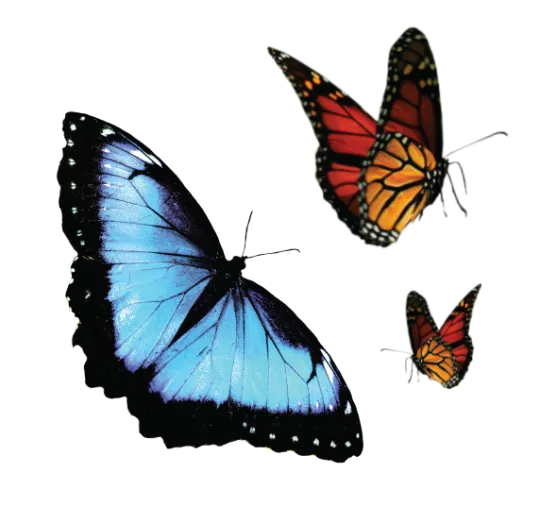
Butterfly Pavilion
Must-do experiences.
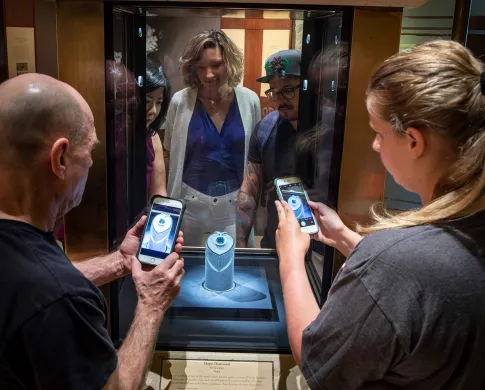
Today at the Museum

Visit the Museum from Home
Additional resources.
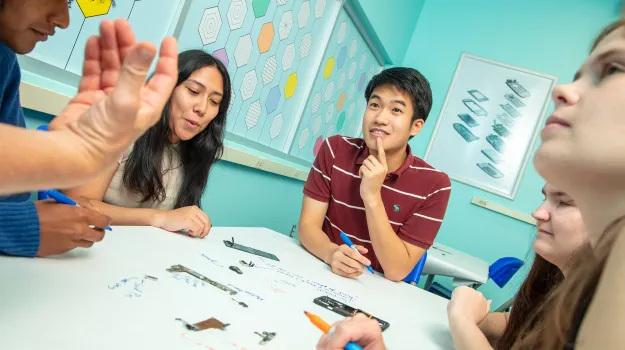
Download Museum Map
Navigate your way around all three floors of the museum.
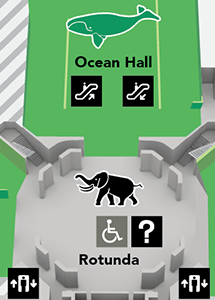
- Smithsonian Institution
- Terms of Use
- Privacy Policy
- Host an Event

COMMENTS
Narrated Tours. The Smithsonian National Museum of Natural History virtual tours allow visitors to take self-guided, room-by-room tours of select exhibits and areas within the museum from their desktop or mobile device. Visitors can also access select collections and research areas at our satellite support and research stations as well as past ...
Videos in This Playlist. Exhibit Introduction. Carcharocles megalodon. North Atlantic Right Whale (Phoenix) Indo-Pacific Coral Reef. Virtual Tour for Students. Join us for narrated video tours of the various exhibits and halls of the Museum, including Objects of Wonder, the Sant Ocean Hall, and Human Origins.
At the Smithsonian | March 18, 2020. How to Virtually Explore the Smithsonian From Your Living Room. Tour a gallery of presidential portraits, print a 3-D model of a fossil or volunteer to ...
Take a virtual tour of 18 gallery rooms, enjoy a panoramic view of the museum's halls and click through a wide collection of artistic masterpieces using the National Gallery's virtual tools ...
America by Air. These virtual tours are made possible through the generous support of Eric Byunn and Alyssa Rieder. Explore virtual tours of exhibitions on view at Smithsonian's National Air and Space Museum.
Go explore American art Beyond the Walls, a virtual reality experience that transports you directly into the galleries of the Smithsonian American Art Museum. Beyond the Walls blends photorealistic 3D capture imagery of artworks from the Smithsonian American Art Museum's collection with augmented elements which let you interact with and learn ...
Welcome to the 4th revision of the Smithsonian's Virtual Tour of the Natural History Museum. This is a work focused on turning the tours into STEM courseware. The eventual media-rich tour of the new hall is a collaboration between The Smithsonian and Loren Ybarrondo.
Plan your Smithsonian visit. When you visit the Smithsonian, you're entering the world's largest museum complex, with approximately 157 million artifacts and specimens in its trust for the American people. Most of our museums are located in the Washington, D.C., area with two in New York City.
Western Cultures 1 | National Museum of Natural History Virtual Tour. ERROR: Adobe Flashplayer or. HTML5 Browser with WebGL or CSS3D support required! A virtual tour created by Loren Ybarrondo and the Smithsonian Institution.
Welcome to the 4th revision of the Smithsonian's Virtual Tour of the Natural History Museum. This is a live work in progress focused on turning the tours into STEM courseware. Smithsonian National Museum of Natural History Virtual Tour This is working draft of an online version of the new Deep Time Exhibit at the Smithsonian's National Museum ...
Visit our halls anytime. The Smithsonian National Museum of Natural History virtual tours allow visitors to take self-guided, room-by-room tours of several exhibits and areas within the museum from their desktop or mobile device. Visitors can also access select collections and research areas at our satellite support and research stations as ...
Main Circulation Path and Age of Humans Bridge. T. rex and the Last American Dinosaurs: 1. T. rex and the Last American Dinosaurs: 2. Asteroid Impact Triggers Dinosaur Mass Extinction. Rainforests Spread Across the Globe. Mastodon and the Main Path (Hallway) A Giant Ground Sloth. Ice Age Extinction Event: 1. Ice Age Mastodon.
The virtual visit to the Smithsonian National Museum of Natural History allows visitors to make independent guided tours, room by room, from their desktop or mobile device. The virtual tour is also recorded in several videos and a narrator explains with simple words the section.
Smithsonian Castle. The Smithsonian Castle, the institution's oldest building, first opened to the public in 1849! While the Castle is currently closed for renovations, you can still explore this iconic building with a virtual tour that includes spaces like the Castle Commons, which features objects from every Smithsonian museum, the crypt of founder James Smithson, and the Castle Library.
Explore Egypt's numerous World Heritage sites from the comfort of home. Discover Keukenhof Gardens and celebrate Spring in Holland on this virtual tour. Virtual Journey: Paris and the African American Experience. Learn about the significance and impact of African American culture on the "City of Light". Explore Japan—a land of sublime art ...
Smithsonian Stories: African American Groundbreakers March 6, 2023 - Ongoing S. Dillon Ripley Center. Abraham Lincoln by W.F.K. Travers February 10, 2023 - December 31, 2027 Portrait Gallery. Spirit in the Dark: Religion in Black Music, Activism, and Popular Culture November 18, 2022 - January 2025 African American History and Culture Museum.
NASM NMB Tour | Virtual tour version 2.02. Virtual tour of the Smithsonian National Air and Space Museum.
A virtual tour created by Loren Ybarrondo and the Smithsonian Institution. Smithsonian Castle Virtual Tour. ERROR: Adobe Flashplayer or HTML5 Browser with WebGL or CSS3D support required! ...
Virtual Museum of Lost Art Asks Visitors to Help Track Down Missing Masterpieces. Nora McGreevy. From virtual museum tours to space exploration, ancient worlds and natural phenomena, this hub has ...
Explore at Home. There are many ways you can bring the National Museum of Natural History to your home or classroom. Our digital offerings range from virtual tours of exhibits to distance learning webinars and activities for all ages.
Smithsonian National Zoo Virtual Tour The Smithsonian National Zoological Park , commonly known as the National Zoo, is one of the oldest zoos in America. It features pandas, lions, tigers, and several other animals native to the Americas.
Stanley, a self-driving winner of a historic robotic vehicle race, is on display at the Smithsonian (opens Tues, free, Smithsonian National Museum of American History). Make massage candles at Shop Made in DC ... A Tour Of Her Own leads a virtual tour about the roles of women in DC during the Civil War era (Tues, $25, virtual).
Virtual Tour; Past Exhibits Please note: This is not a comprehensive tour of all past exhibits at the National Museum of Natural History. This is a tour of only a selection of past exhibits at NMNH. Against All Odds: Rescue at the Chilean Mine Mine Rescue exhibit. Mine Rescue; Cyprus: Crossroads of Civilization
Guided tours are also available inside Dark Cave, a subterranean passage more than a mile long whose maw is located at step 204 of the 272-stair ascent to Murugan's shrine.
Virtual Tours. The Smithsonian allows virtual visitors to digitally roam around some of its museums, including the Museum of Natural History and the National Air and Space Museum. ...
Verbally-described tours with tactile elements designed for visitors with visual disabilities are available with a two-week advanced notice. Subject to volunteer availability. To request this service, please call (202) 633-5238 or e-mail [email protected] .